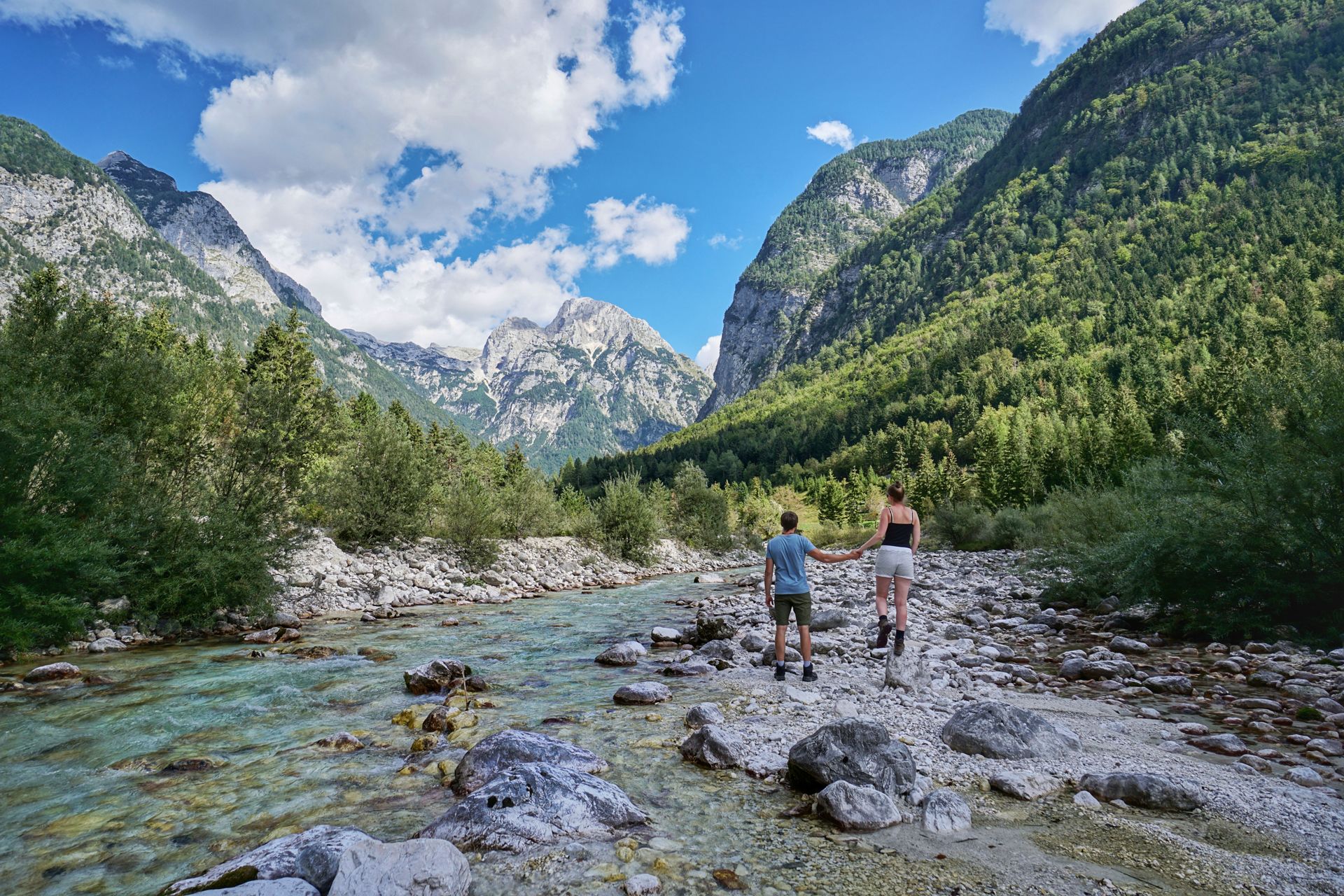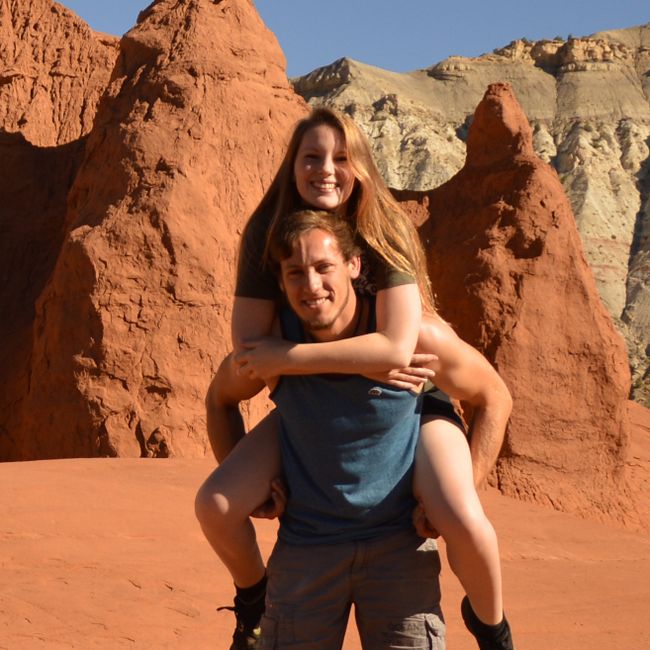
leavingtoreturn
vakantio.de/leavingtoreturn
10. Stop: Lawless in Vietnam
Ebimisami: 03.09.2019
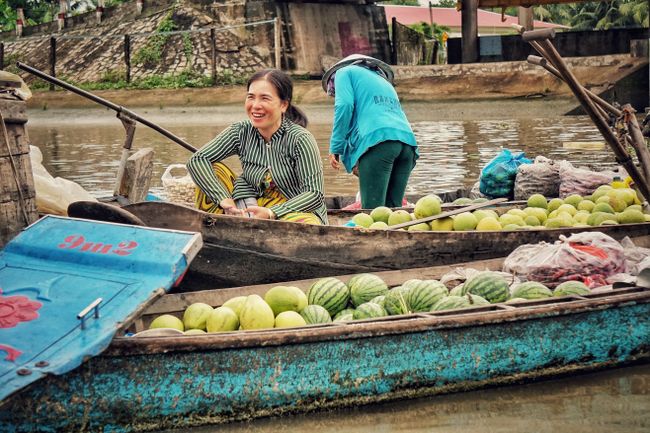
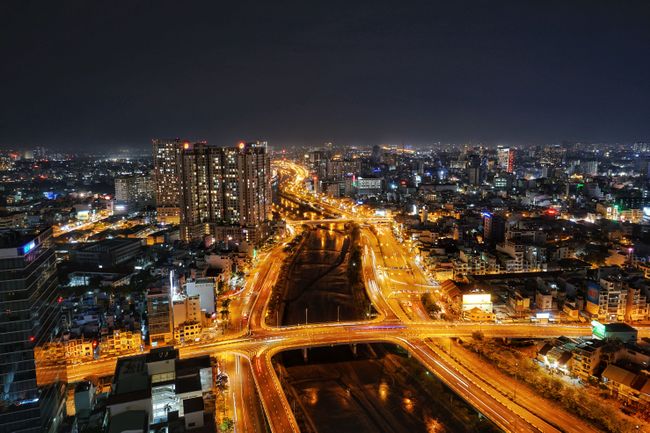
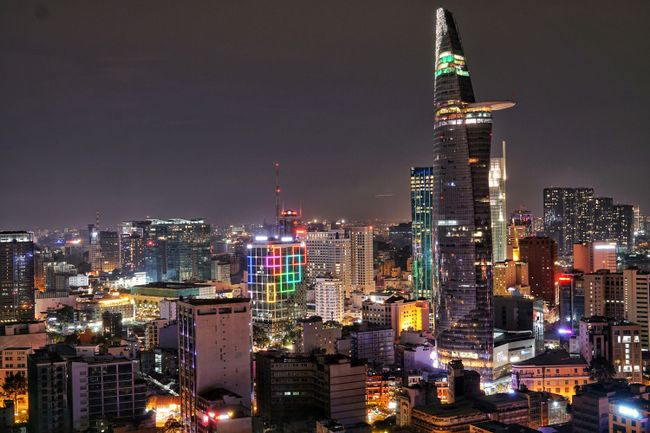
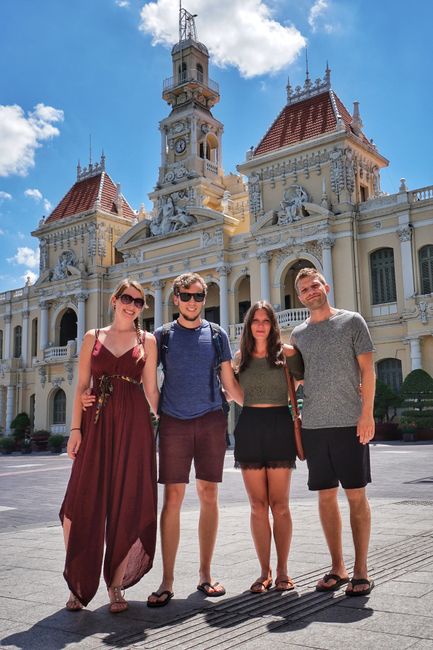
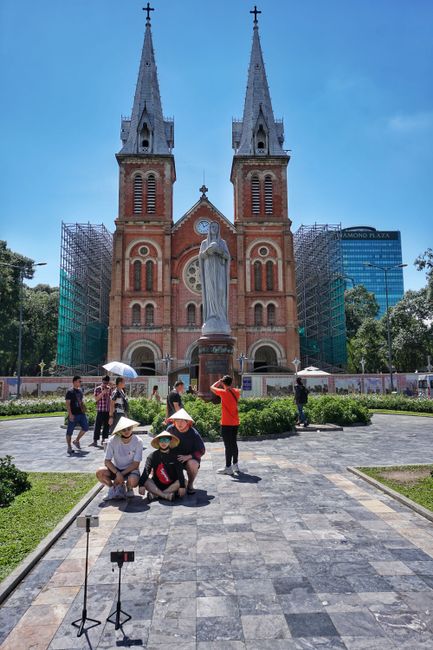
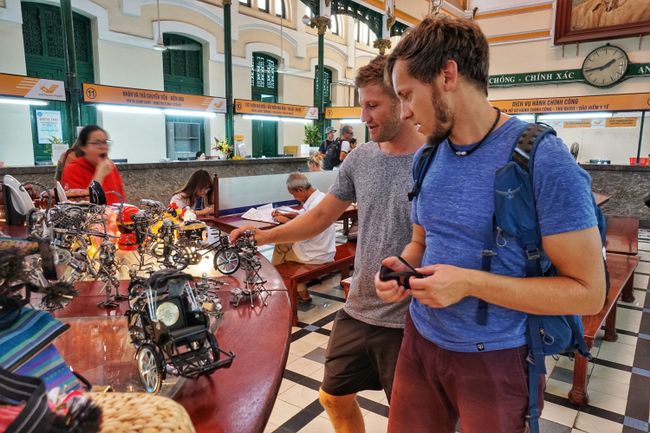
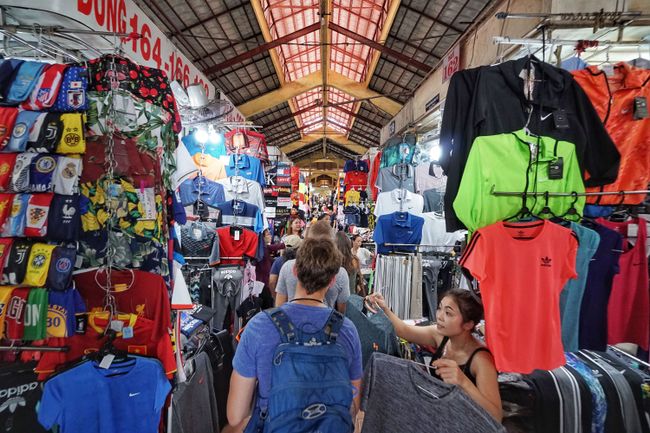
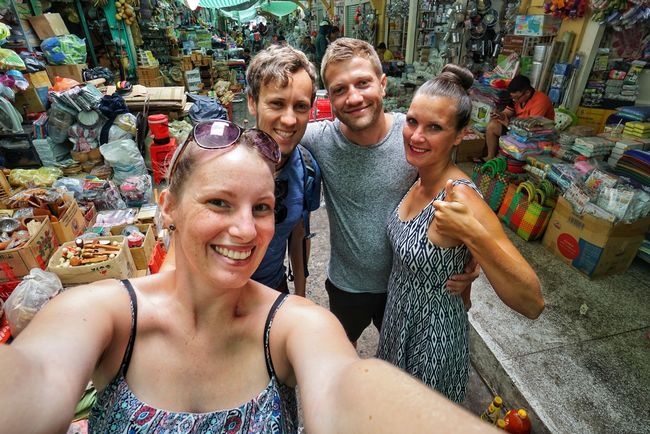
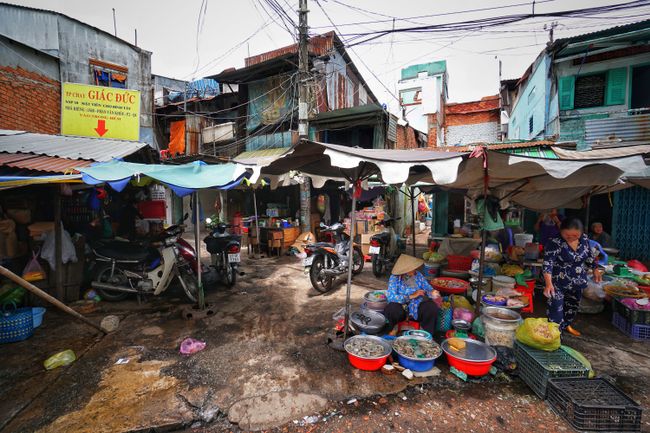
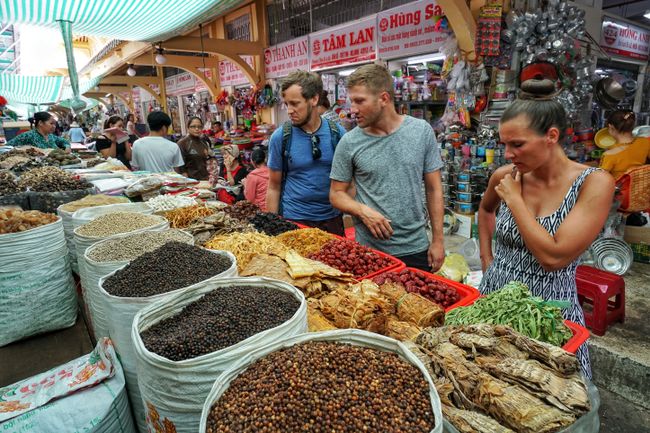
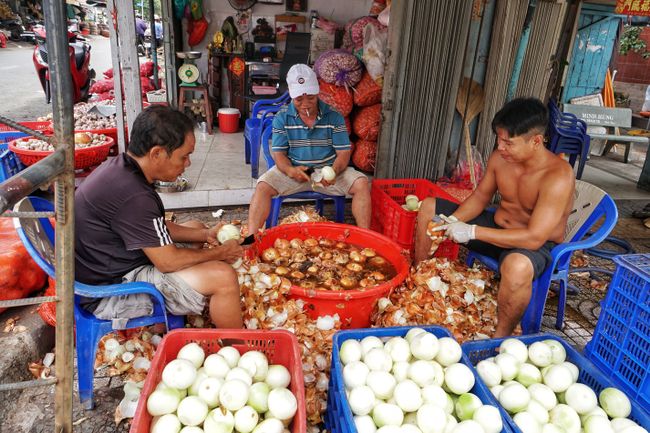
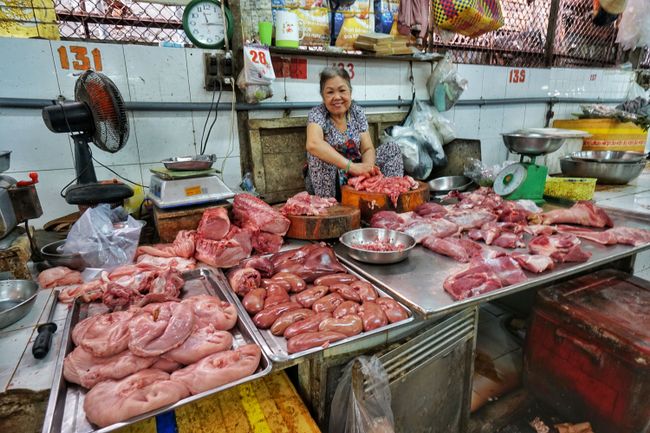
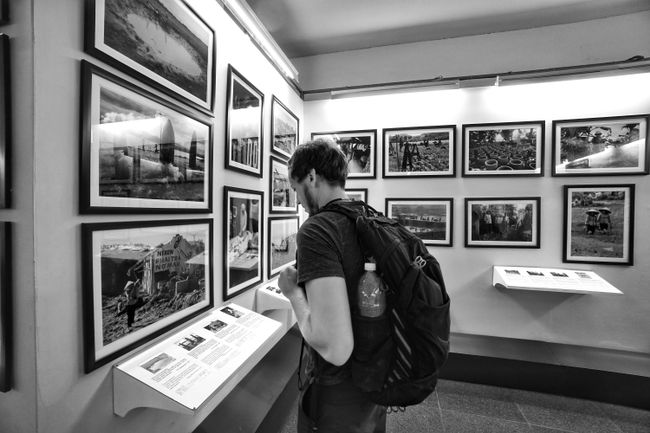
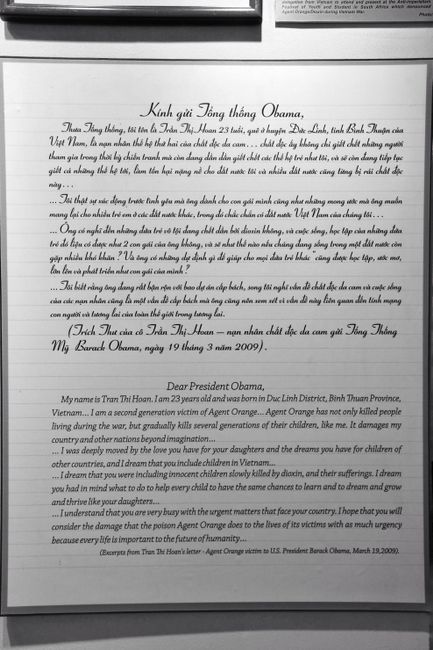
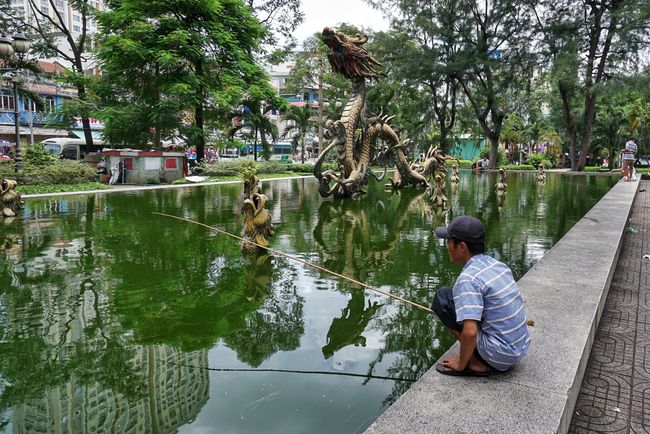
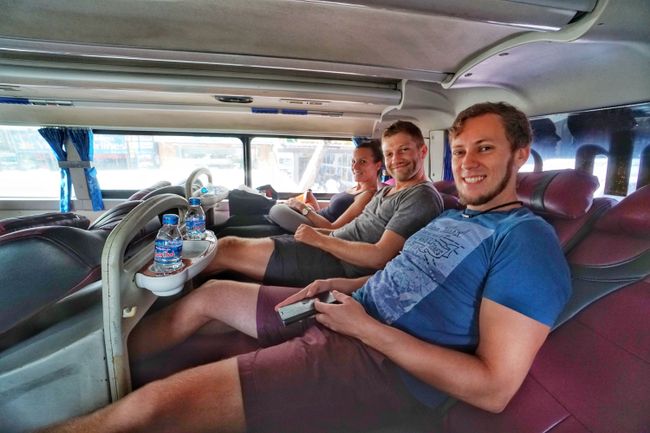
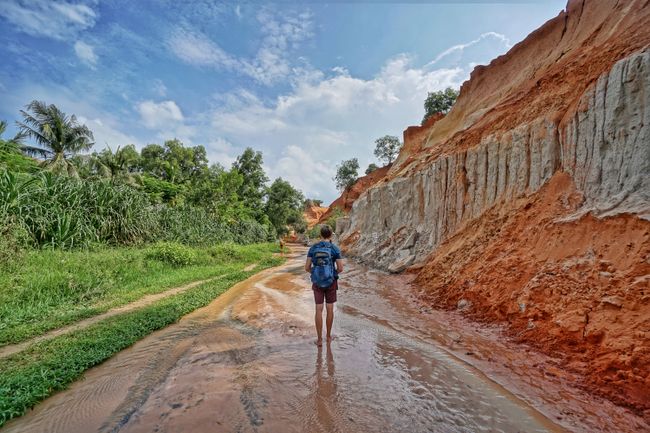
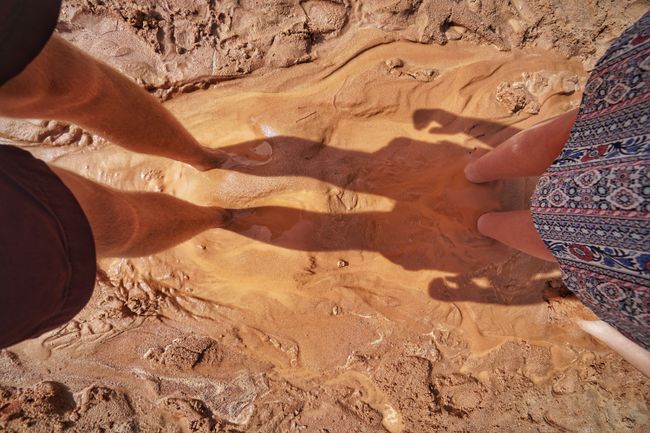
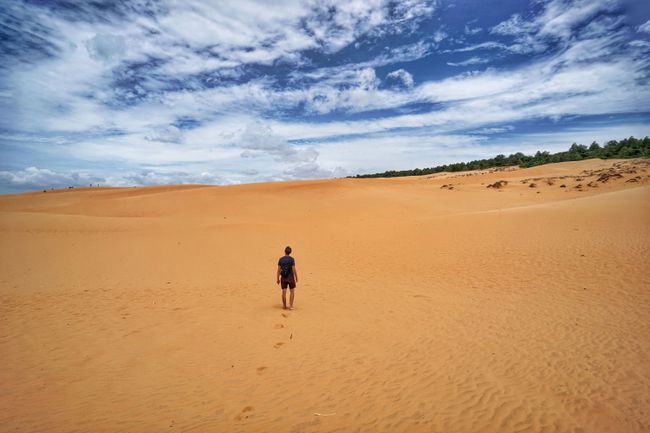
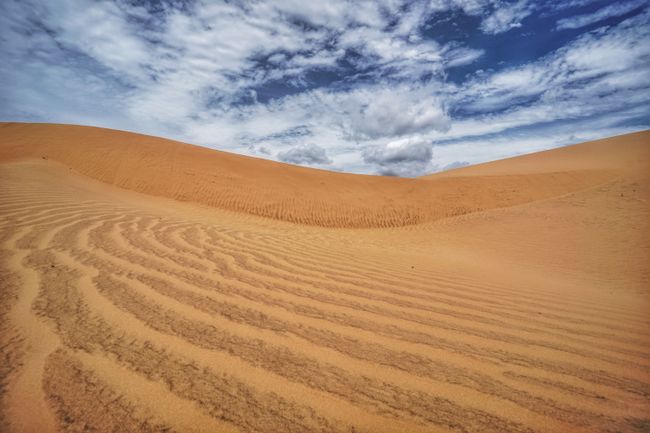
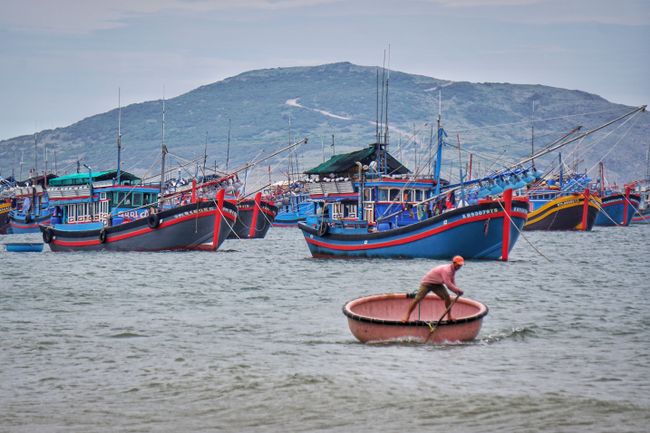
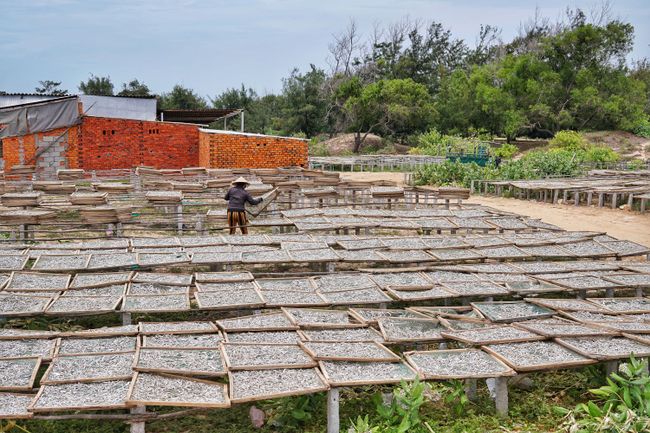
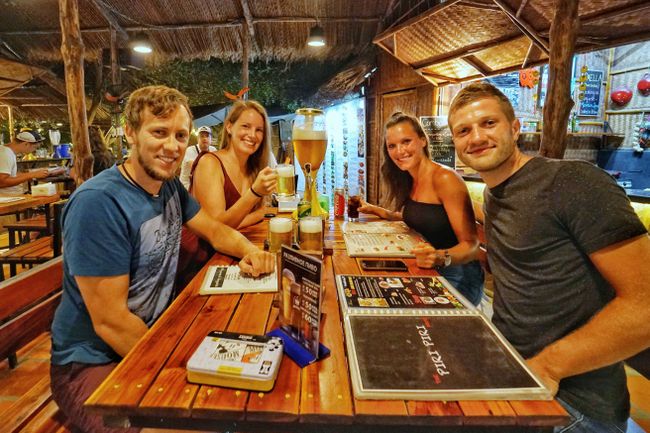
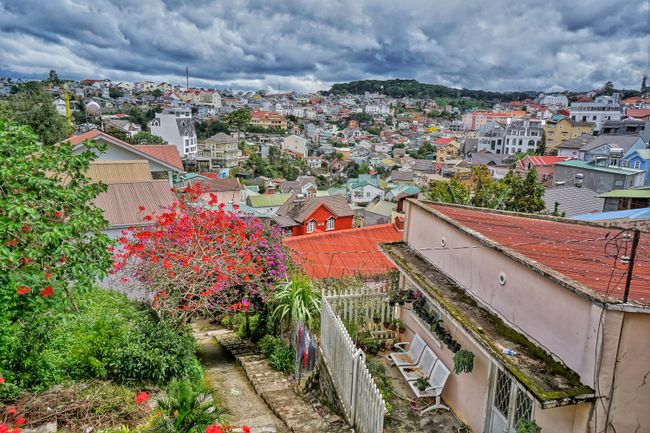
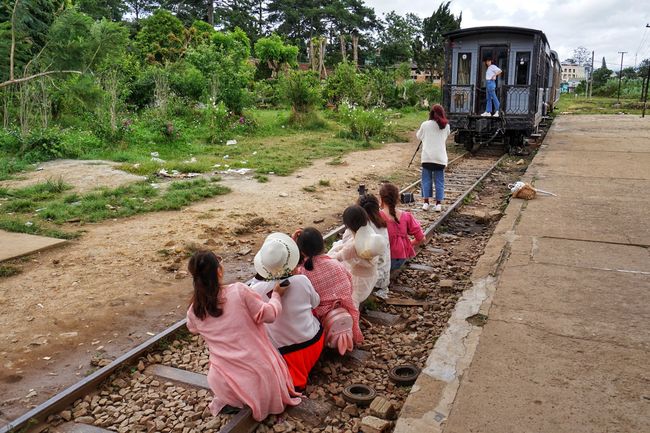
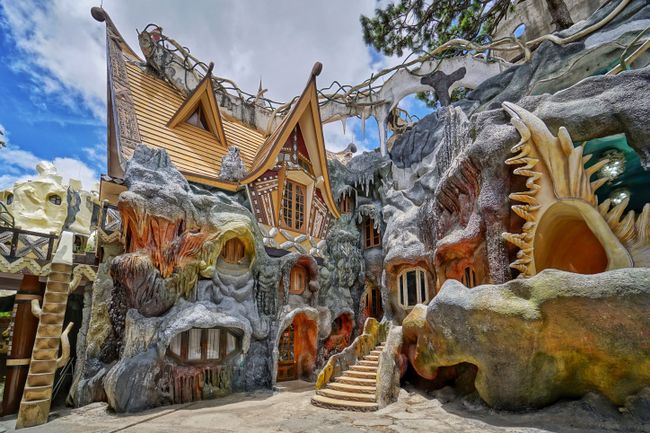
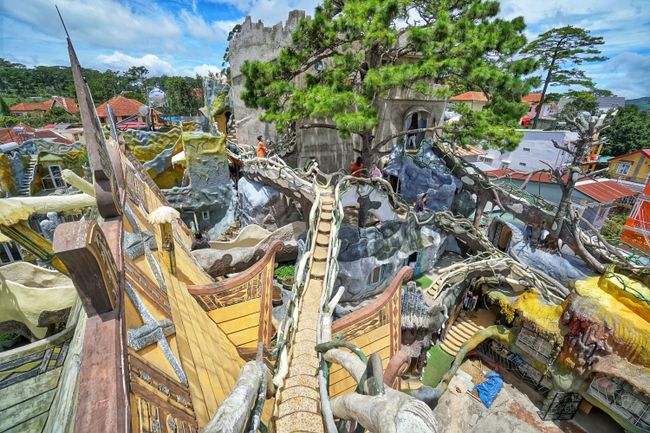
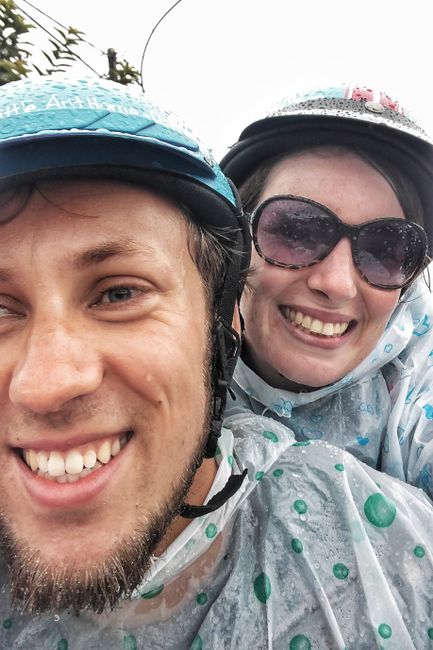
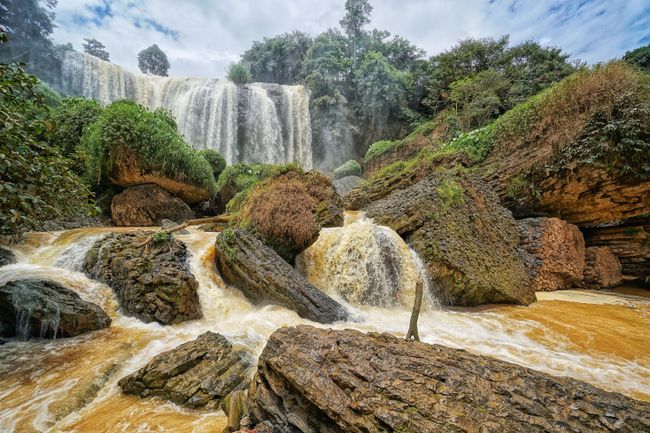
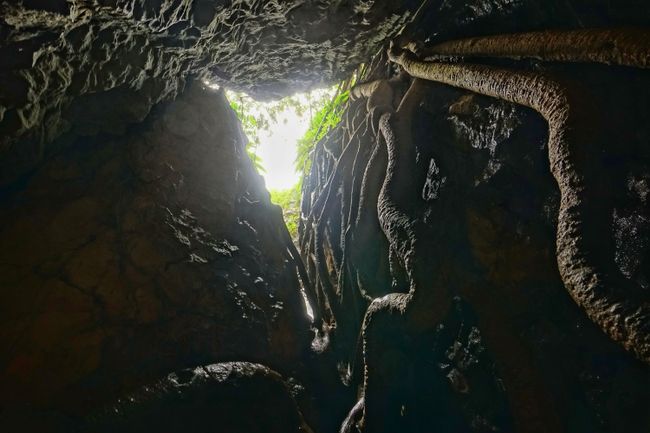
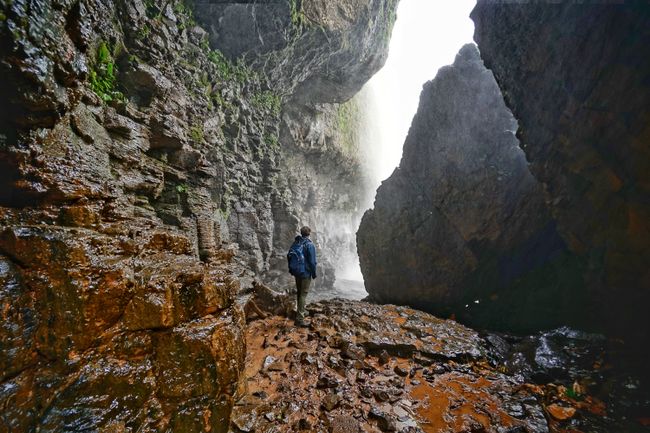
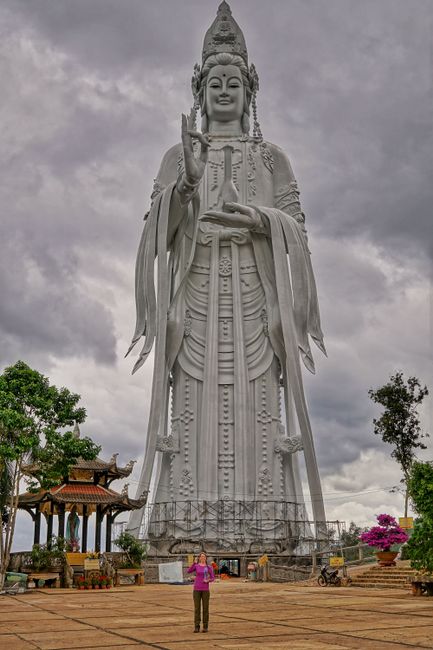
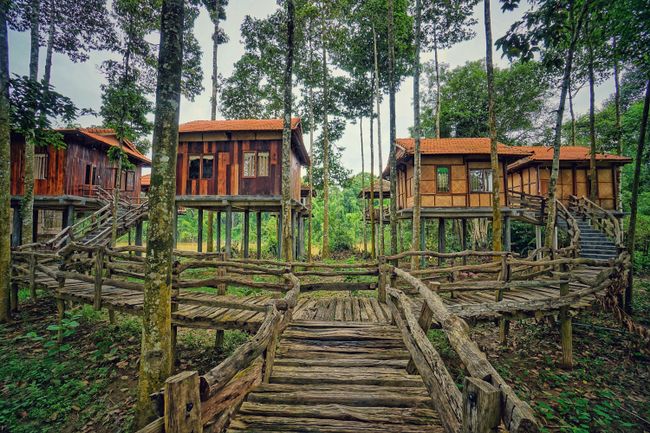
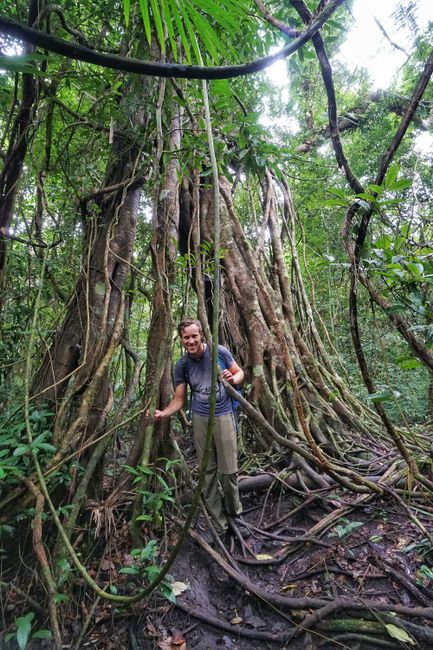
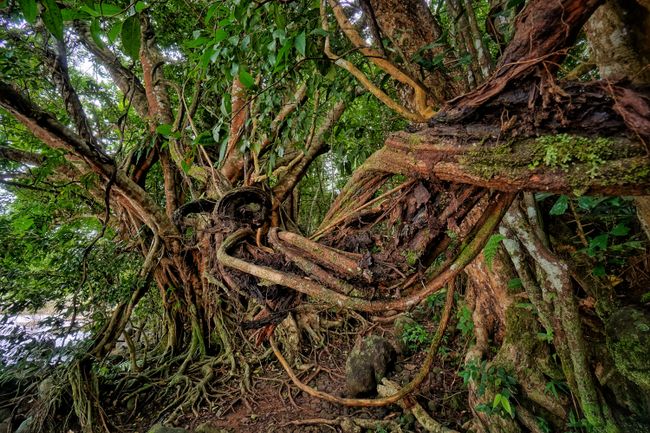
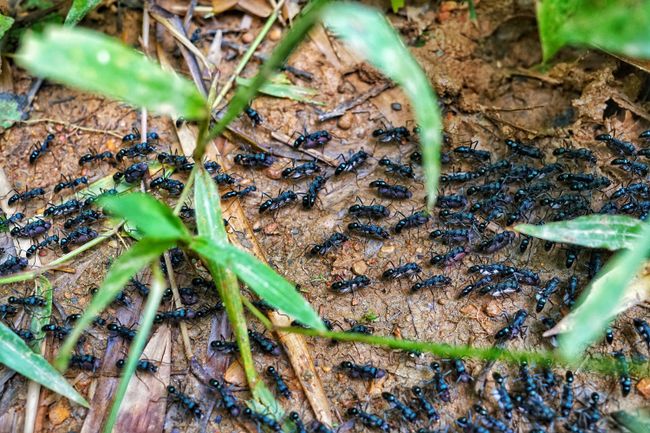
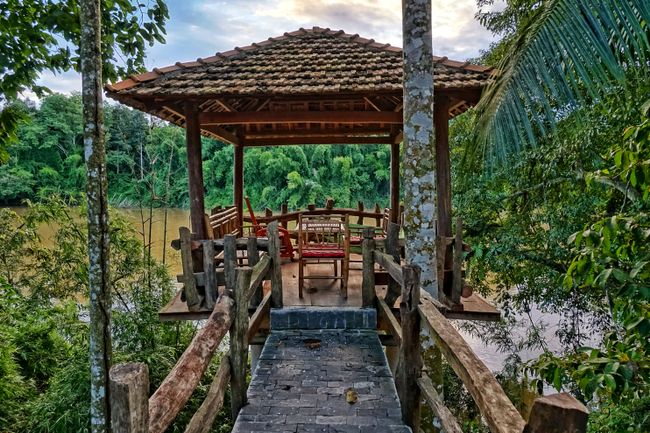
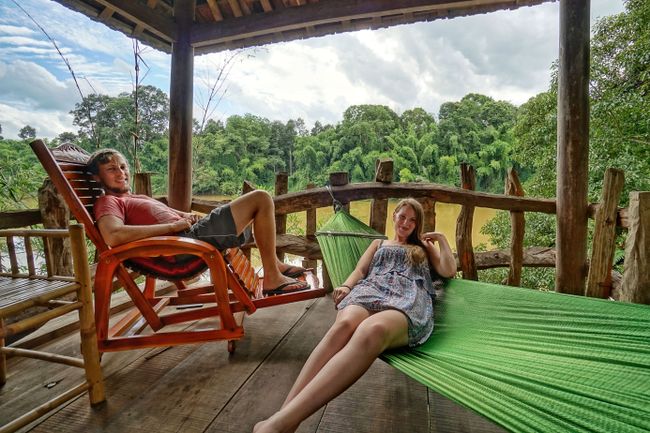
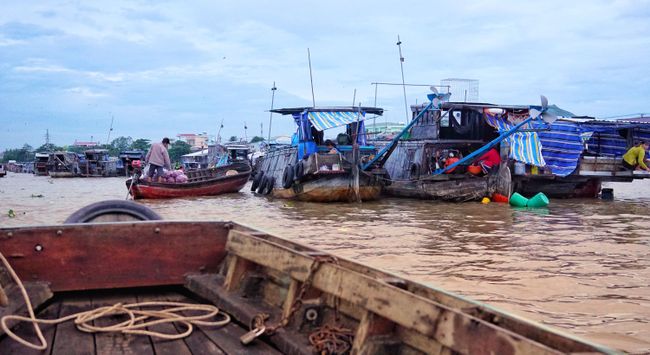
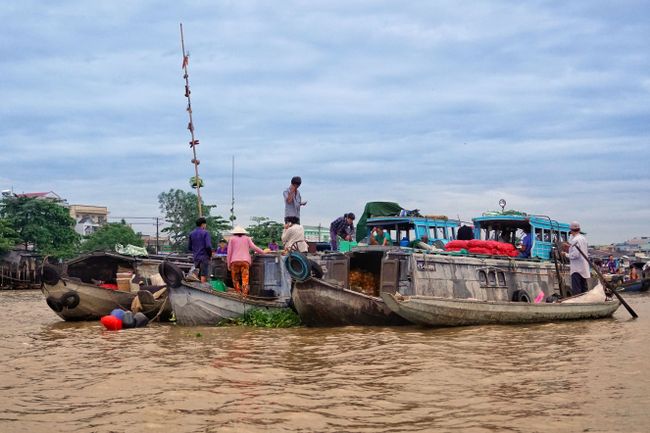
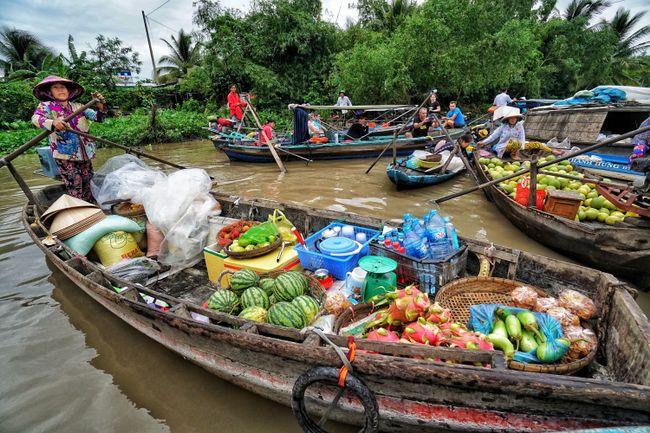
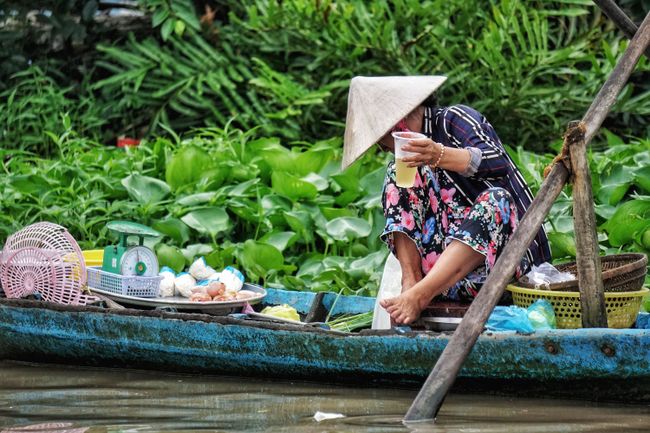
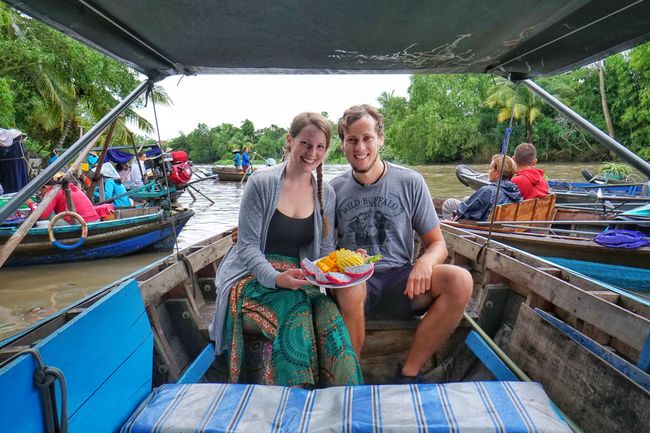
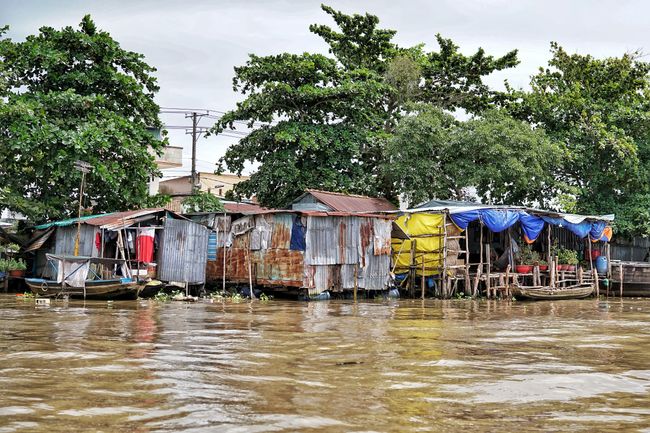
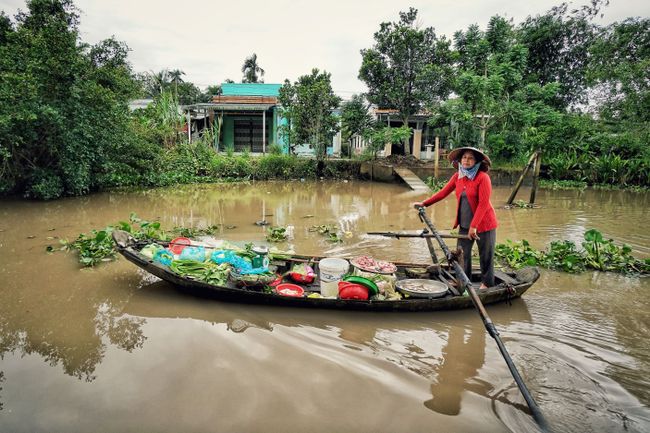
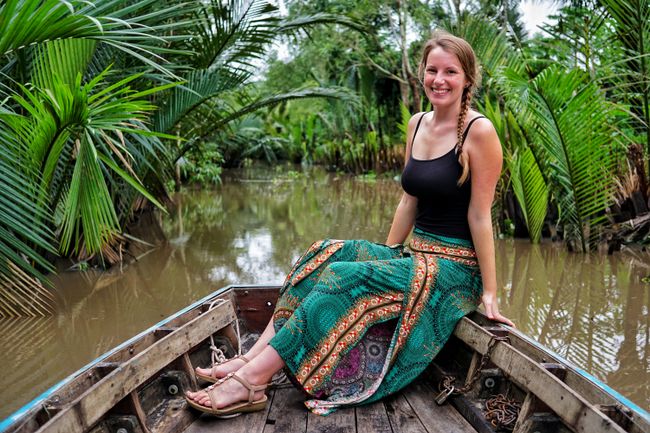
Abonnez-vous na Bulletin ya Sango
After all the rules and seriousness, we desperately needed some fun and fate listened to us and delivered the perfect combination: meeting our friends from Germany in lawless Vietnam. Just a short flight away, we arrived in a completely different world: Ho Chi Minh City, the largest city in Vietnam. At the airport, we were overjoyed to meet Helena and Niklas and immediately felt a little bit at home again (Niklas is one of Jan's closest friends from university days and Helena is Niklas' better half). From here, a taxi took us through the crowded streets filled with scooters to our apartment for the next few days. The taxi driver can probably speak German now after enduring our non-stop chatter. There's just so much to catch up on after such a long time without our friends! The view from the rooftop terrace of our apartment complex on the 34th floor revealed that we would have a lot to do in the coming days: as far as the eye could see in all directions, there was nothing but skyscrapers!

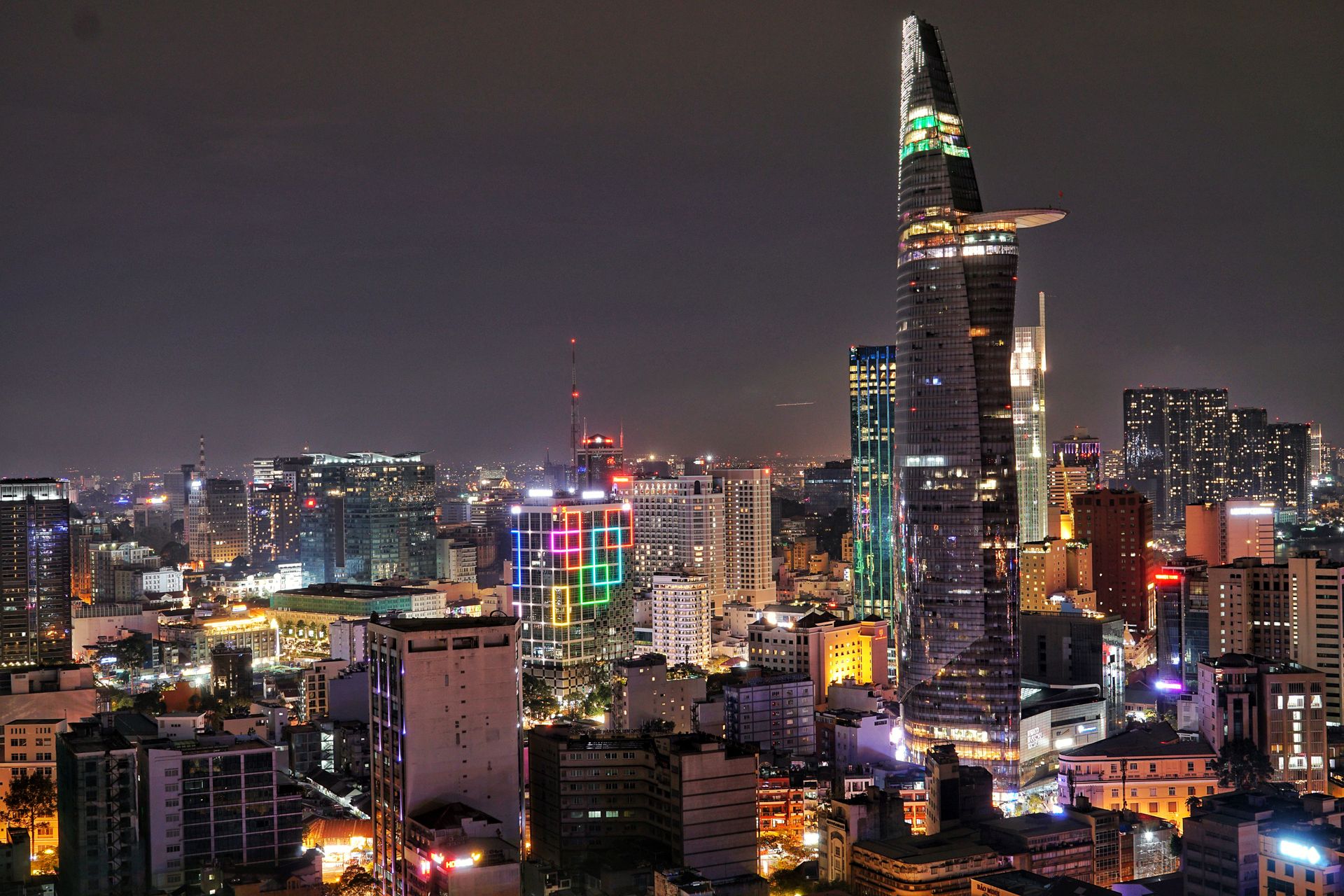
During our explorations, of course, we first made our way to the heart of the city, which, surprisingly, has a strong French influence. There is a Notre Dame Cathedral, an old French post office, and many other magnificent buildings amidst the typical high-rise complexes. Suddenly, it didn't feel like being in an Asian metropolis anymore, because everything was much cleaner, more orderly, and somehow European. Only the traffic, the constant danger of being run over by a scooter (in the opposite direction, on the sidewalk), and the heat remind you that you are indeed in a completely different world.

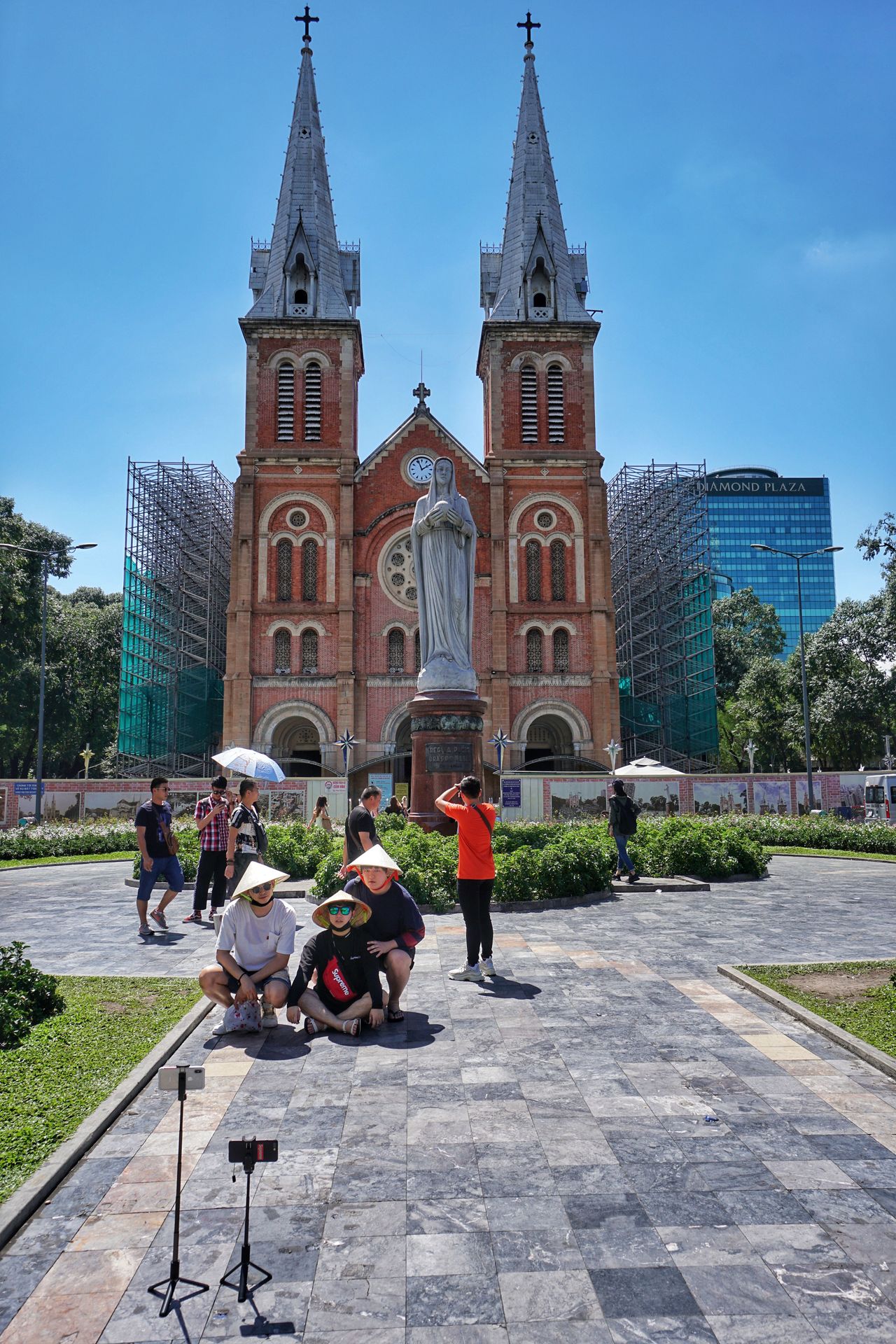
To truly see this world and the authentic lives of its inhabitants, we then explored the markets of Ho Chi Minh City. Our first stop was the Ben Thanh Market, where we got a first, rather touristy impression of the bustling market scene and quickly moved on to avoid the vendors who pressed fake branded goods in our faces and shouted "special price" in our ears.

A completely different experience was then visiting the local Binh Tay Market in an outer district, where hardly any tourists ever stray and where we were hardly noticed. We spent hours there, fascinated by the huge spice stands and very unsanitary meat vendors. In some corners, our noses suffered quite a bit, as it smelled terribly of all sorts of things, mainly dried fish and spoiled meat. But despite this culture shock, it was an impressive and very funny glimpse into a world where rules and regulations have no place, where everyone just does what they want, and where everyone has a smile on their face.




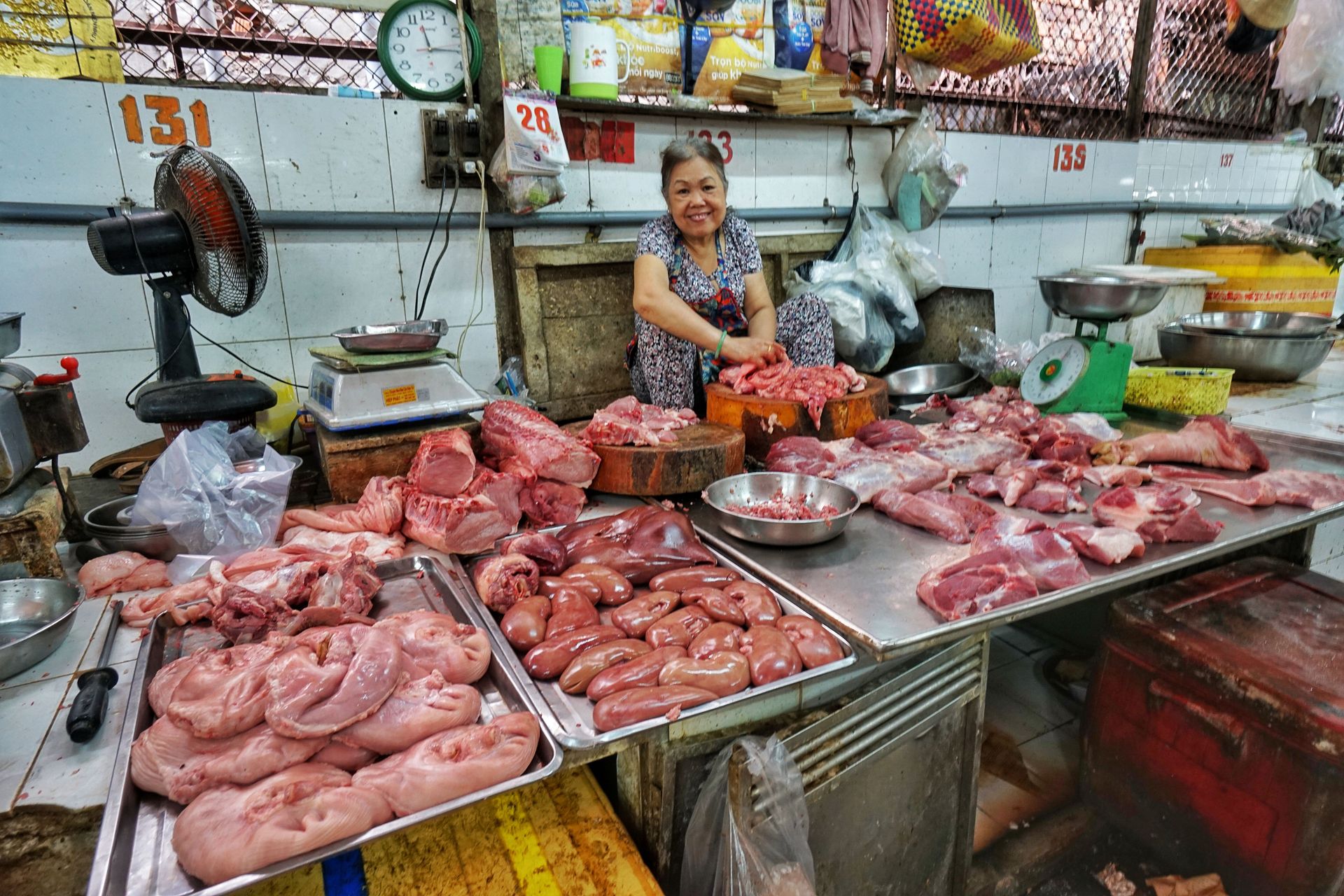
Originally, we wanted to fill our knowledge gaps about the history of Vietnam by visiting the Cu Chi Tunnels, where thousands of Vietnamese found shelter during the Vietnam War. However, we decided against it because the tourist setup with a shooting range that resembled a funfair seemed very inappropriate. Instead, we decided to visit the huge War Remnants Museum, which left a lasting impression on us. The Vietnam War, or Indochina War, is illuminated from multiple perspectives here, with a special focus on the countless Vietnamese victims. Horribly shocking photos taken during and after the war show the extent of this mass destruction. In addition, there are countless stories of families, soldiers, and photographers who experienced this war and sometimes did not survive. It is difficult to say what feeling one has when visiting this museum. The sights and stories are difficult to process, yet we would like to send every single person there, because after this, no one can support war or simply look away when others are affected.
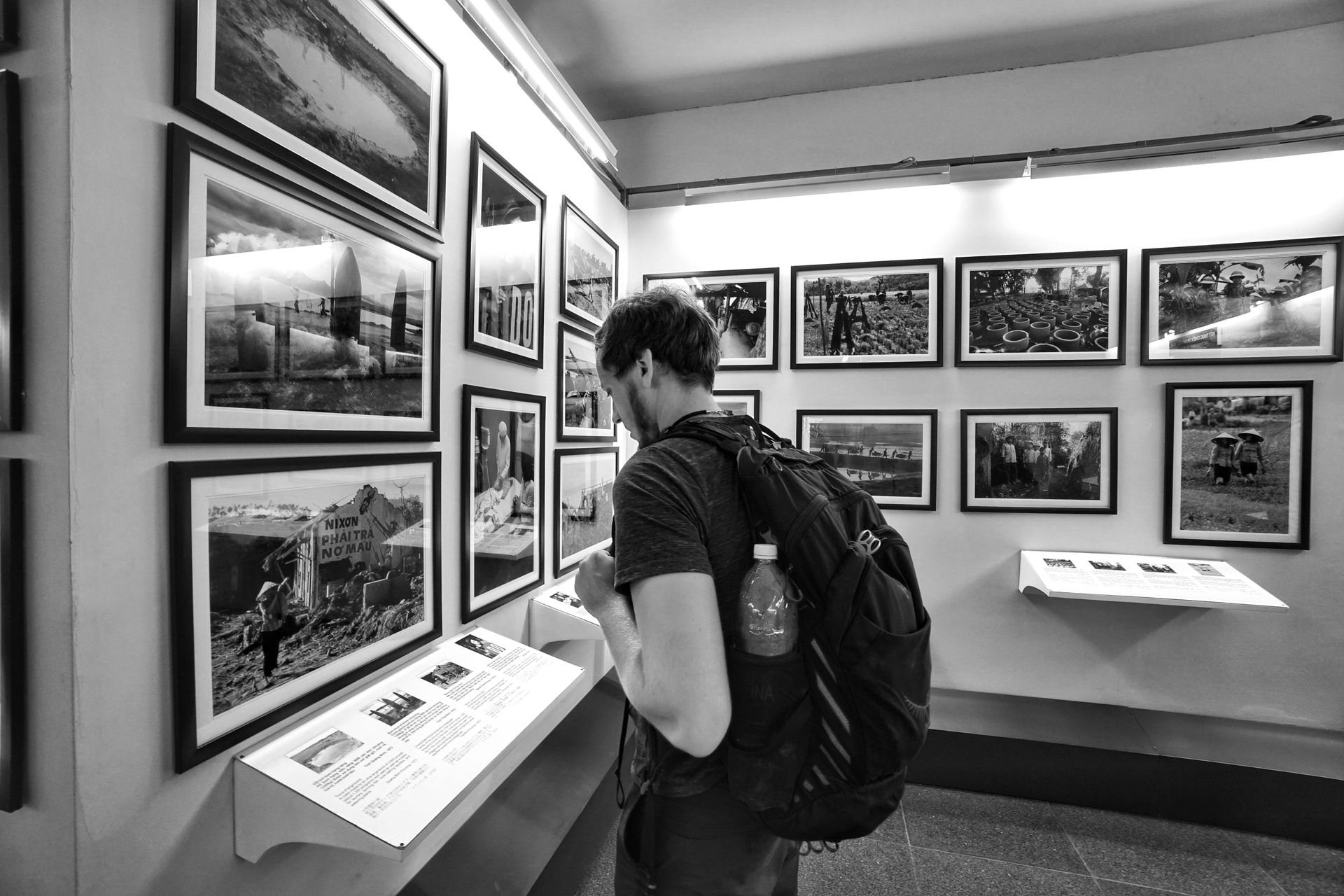

But enough of the serious and sad topics, because Vietnam has so much more to offer than a tragic war history. Actually, we have to say that Vietnam has given us back our happiness and joy, because the people here are much more relaxed, friendly, and happier than in Malaysia, and perhaps a bit crazier too. It's no wonder that a waiter in Malaysia warned us that Vietnamese are all "lawless". It might seem that way to people from Malaysia, as there are far fewer rules here in Vietnam and people don't follow the existing rules anyway. But for us, this was not a negative thing, but very refreshing and relieving. It's only because of this that you can see people fishing in fountains or groups of men setting up plastic chairs in the middle of the main street and drinking liters of beer in the middle of the day.
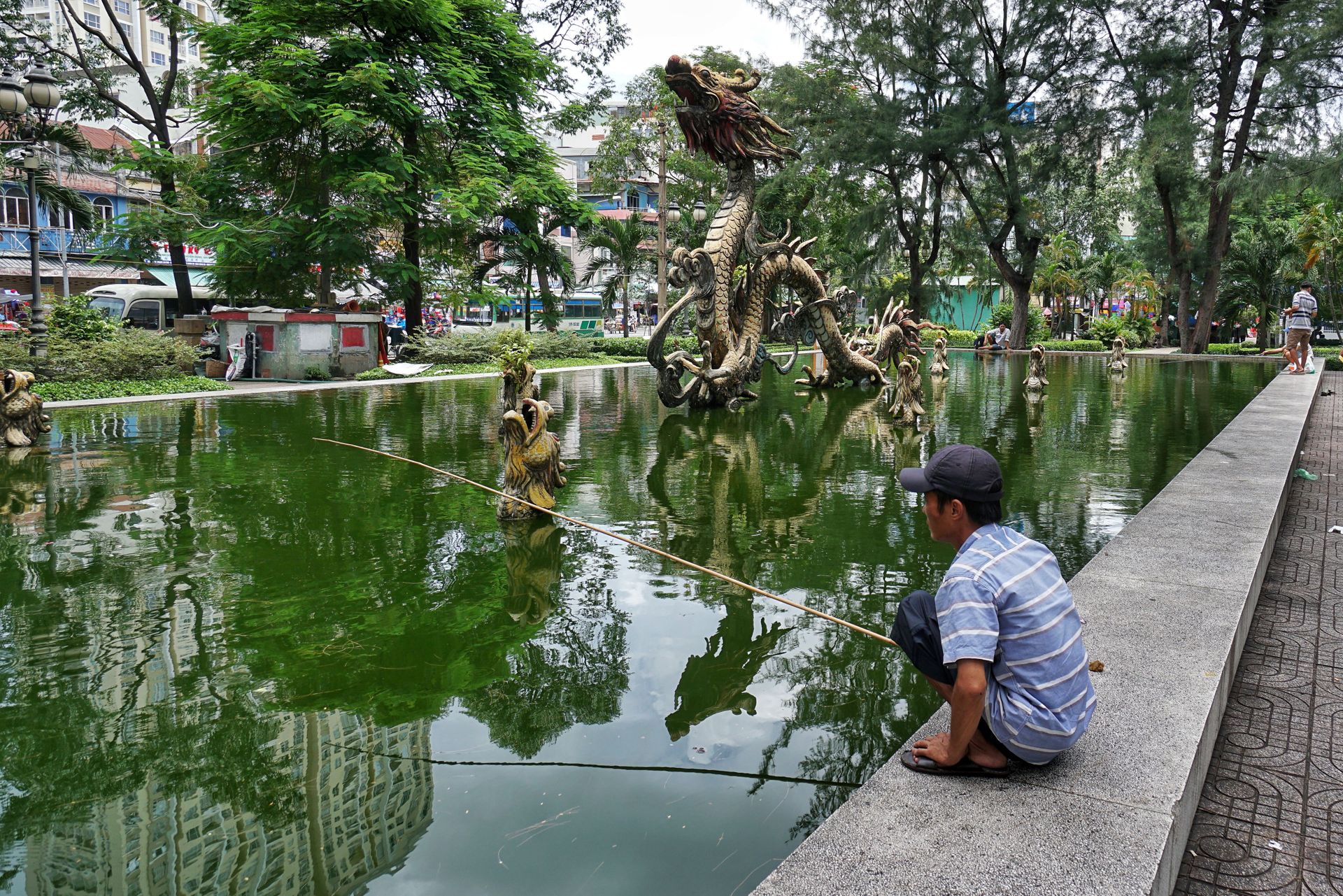
After wandering through the concrete jungle of Ho Chi Minh City, our next destination was the coast. With a sleeper bus (a brilliant invention where you can almost lie down on two levels in a coach and arrive at your destination very relaxed and comfortable) we traveled together with Niklas and Helena to the town of Mui Ne in about 4 hours. Since Niklas and Helena had reached the end of their Vietnam trip, they spent a few relaxing days on the beach while we explored the surroundings.
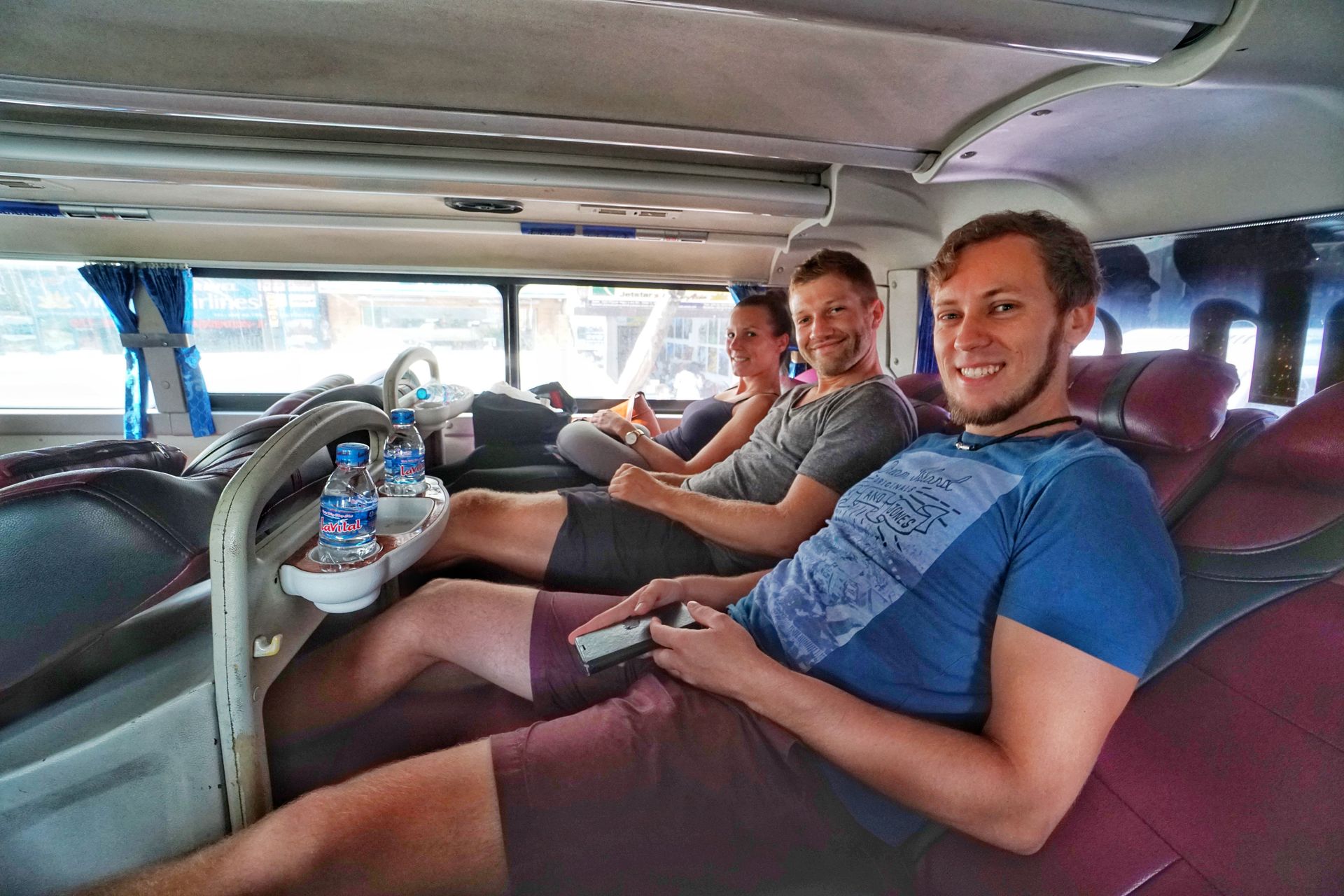
Especially worth mentioning is a short hike along a very shallow stream called the Fairy Stream. The hike starts in the middle of the city and after the first two turns, you find yourself in an unreal setting of bizarre rock and sand formations created by the heavy rain from the sand dunes in this region. Overall, this was a good opportunity to finally experience nature again - but admittedly, this was only partially possible, as in the small cafes along the way, Vietnamese people had to demonstrate their nonexistent singing skills with karaoke at full volume. It's a popular pastime here!


In this context, another highlight that we didn't expect in the tropics were the red sand dunes of Mui Ne. These were just a short scooter ride from our accommodation (yes, here we dared to get back on our own vehicle) and offered a good view of the city and the adjacent sea. Running around in sand dunes and jumping into the sand never gets boring.
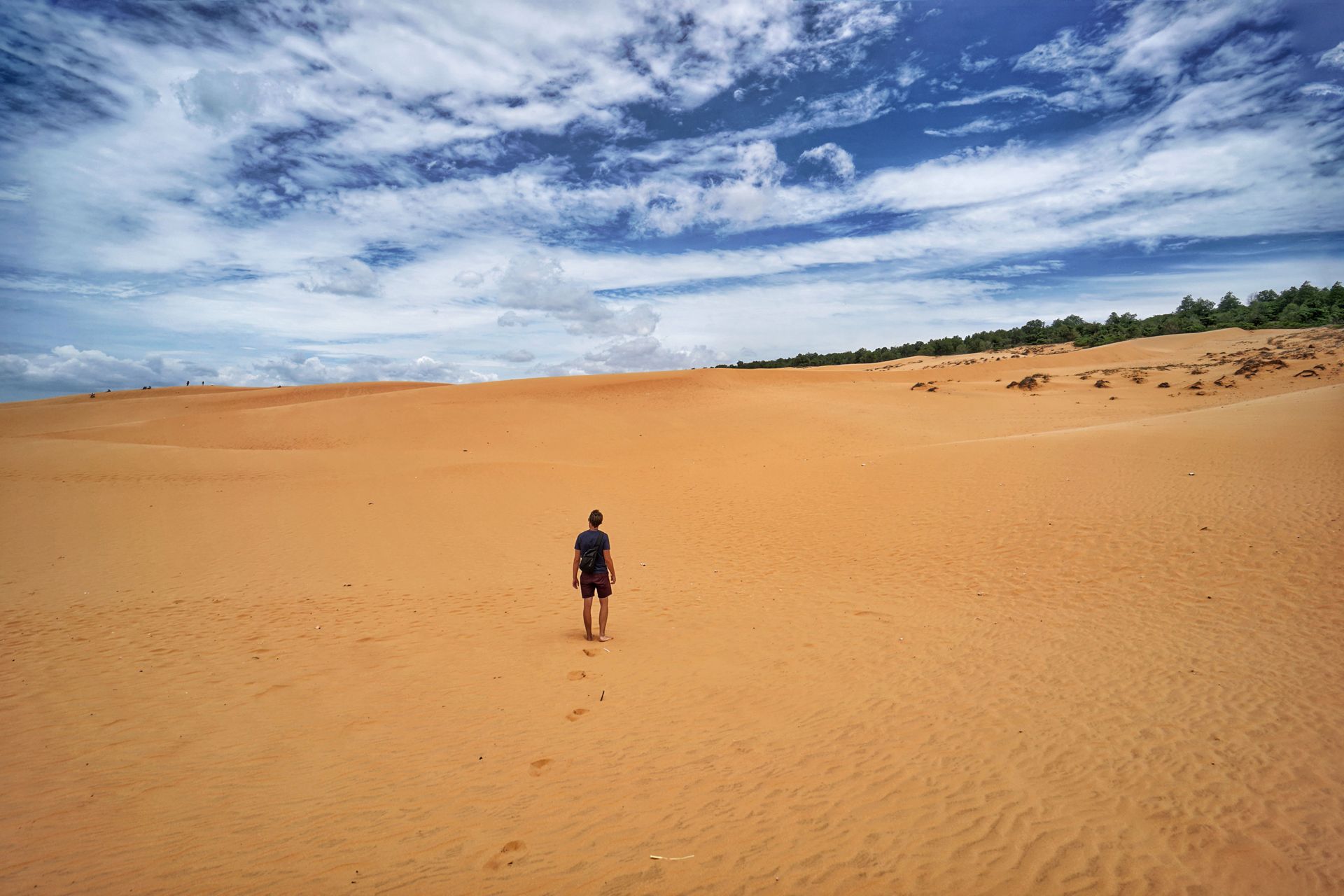

We also watched fishermen at work on the coast, even though our noses suffered from the abundance of fish remnants on the beach, and in the streets, small fish were dried out in the sun. These fish are used to make fish sauce or crispy side dishes for meals - not exactly our idea of gourmet food.

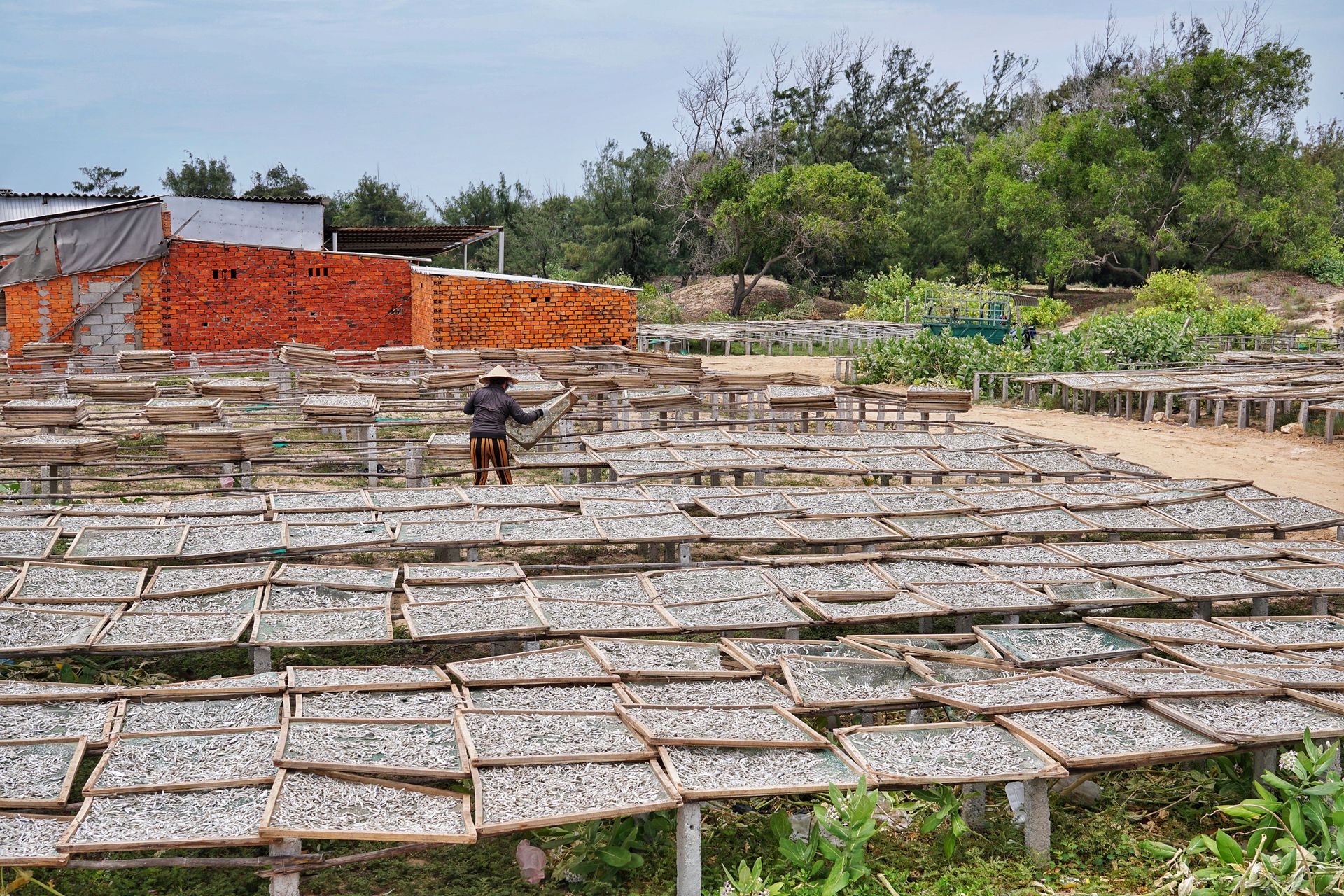
In the evening, we enjoyed delicious Vietnamese specialties and cold beer from the beer tower at a beautiful food court with a beach holiday vibe, together with Niklas and Helena, one last time and at very reasonable prices. If it had been possible, we would have packed up this food court and taken it with us on our entire journey, preferably with Helena and Niklas!
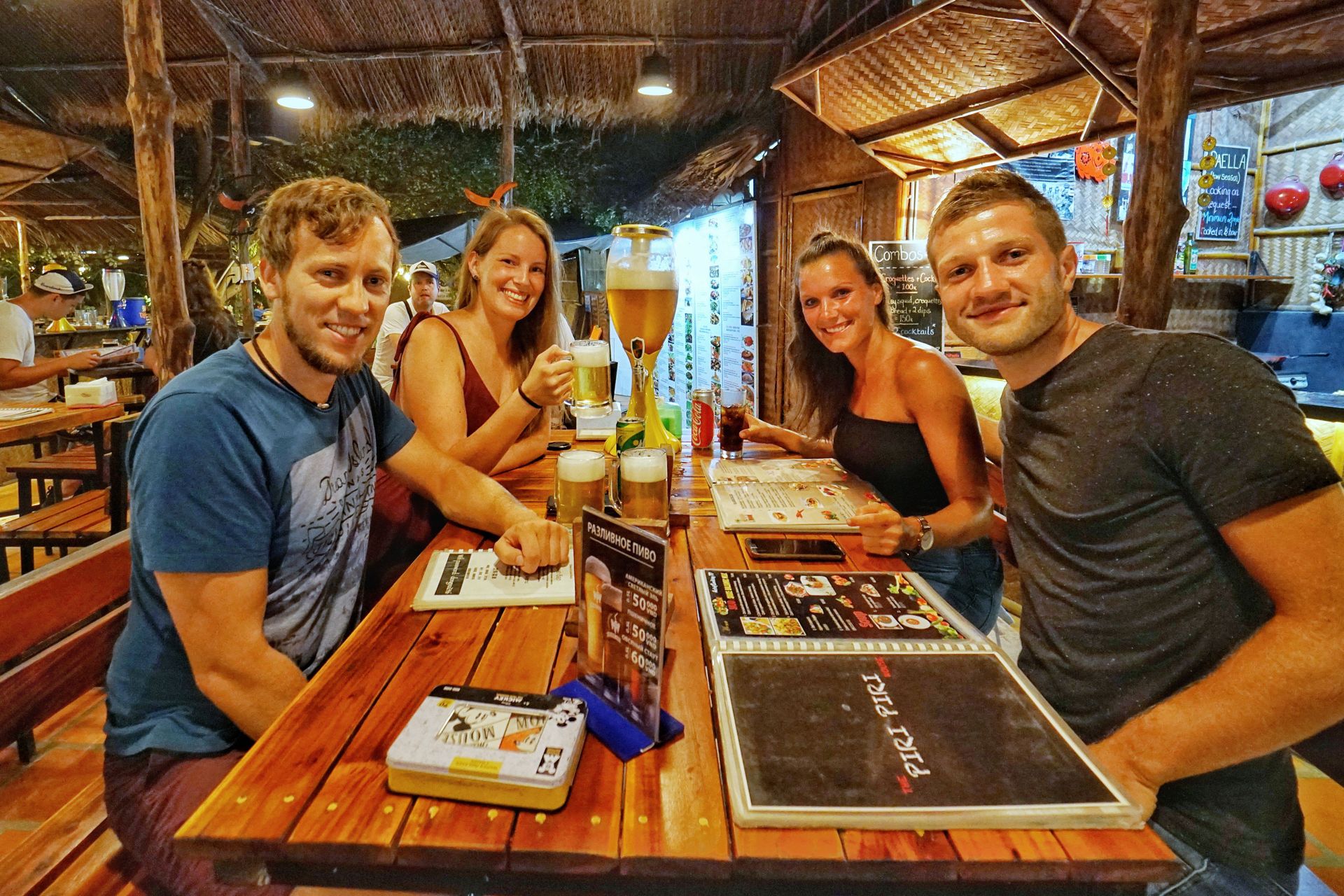
Unfortunately, we had to say goodbye to Niklas and Helena too early. We took the bus towards the north to the inland of Vietnam, while Niklas and Helena had to return to Ho Chi Minh City to catch their flight home. Our bus ride itself was much less comfortable than the last one. After 5 minutes of driving in a rickety old bus, we stopped to change a tire, and what was supposed to take 5 minutes took more than an hour. On the journey over bumpy roads, an even longer rest stop was made, as the bus driver was hungry and first wanted to have a meal in peace. Since we arrived at our destination Da Lat much later than planned and the rush hour traffic was too exhausting for the bus driver, he decided not to take us to our destination but to drop us off at the outskirts of the city. There, coincidentally, were the so-called "free riders" (motorcycle riders who take you on the back seat and show you the surroundings), who immediately offered us their services for overpriced fees. We politely declined, feeling annoyed, and walked the last kilometers to the hotel on foot. At that point, we also realized that sometimes it's quite nice when people adhere to basic rules and agreements.
Da Lat itself shines with its beautiful location in the mountains and with many European or kitschy buildings, such as a Christian church (here even called a cathedral) and an old train station with a steam locomotive. The latter was not overly exciting for us, but Vietnamese tourists can be very enthusiastic about it - because where else, except in Europe, can they see something like this? In general, Asians are very interested in things created by human hands, our host explained. Natural sights, on the other hand, would be less interesting to local tourists. For us, this is unimaginable, but an interesting insight. This also explains why Da Lat is the main resort for inland Vietnamese.
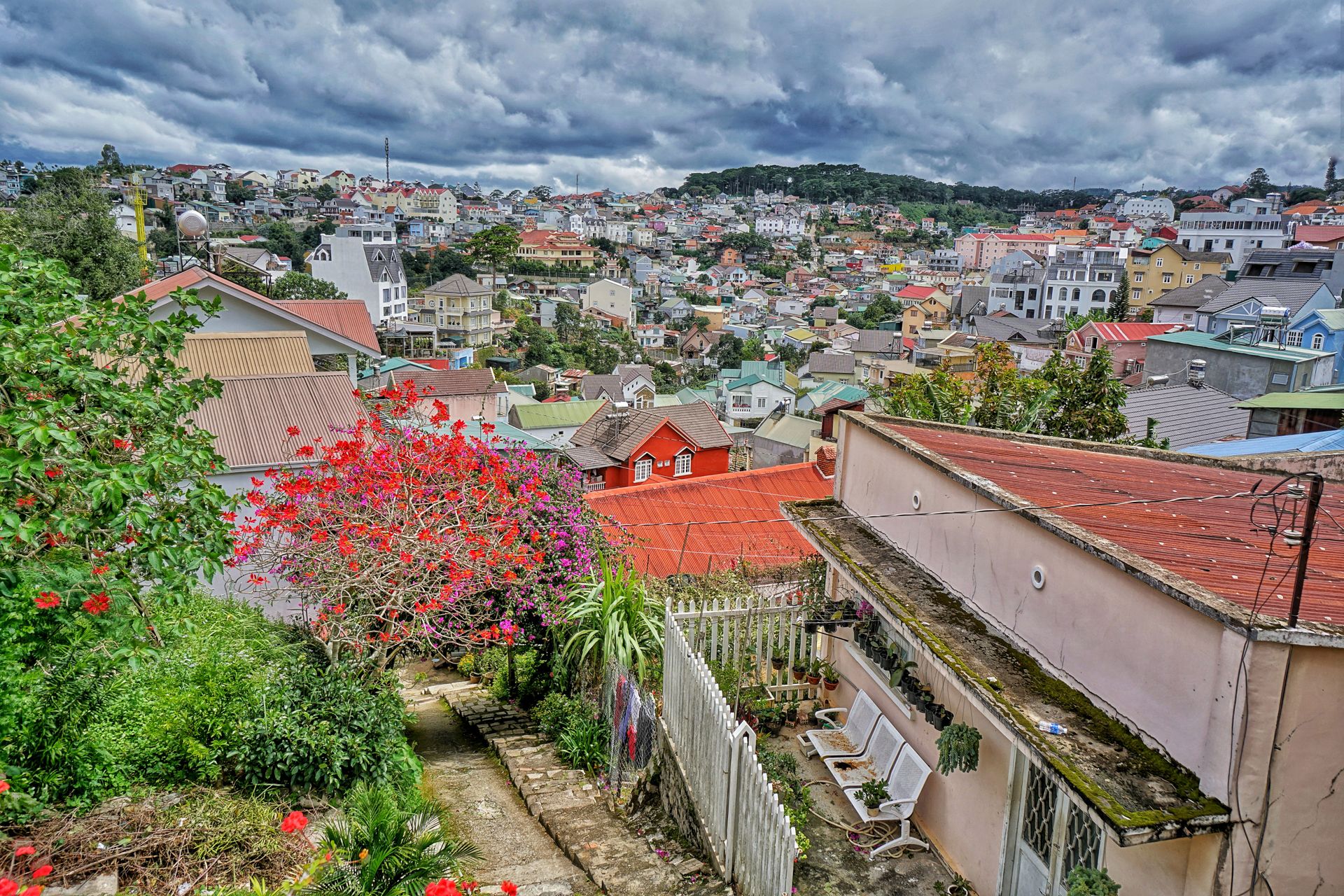

Another funny and interesting discovery for us was the "Crazy House," a complex of several winding buildings that resemble a mix of Gaudi and Grimm's fairy tales. There are winding stairs and paths everywhere, up on the roof and through tunnels. Right angles or straight lines are nowhere to be found, and each room has a different theme, such as underwater world or treehouse. The whole thing was designed and built from 1990 onwards by a very creative Vietnamese woman who fulfilled her dream of a wonderland here and made it accessible not only to overnight guests but also to day visitors.
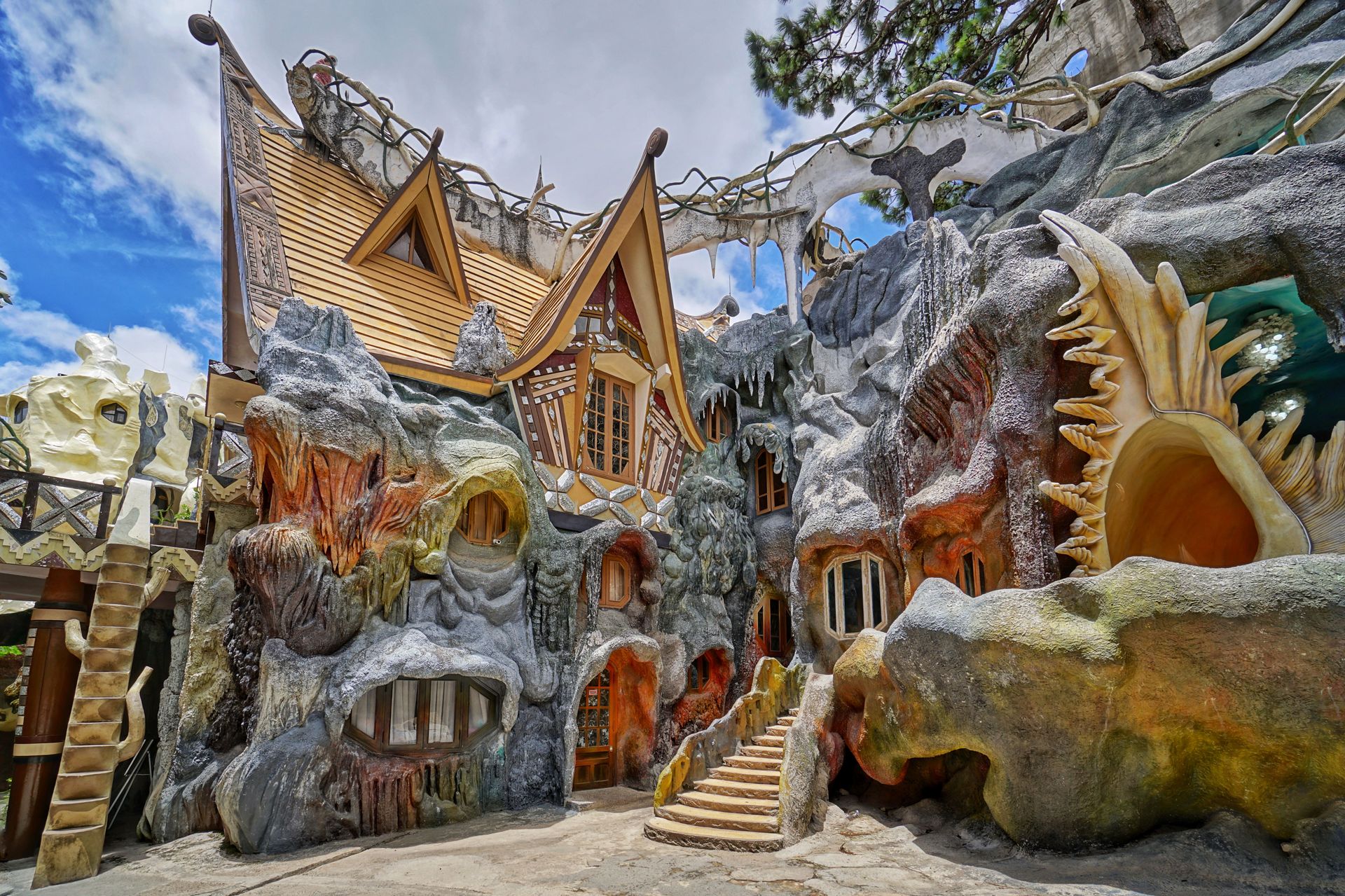

To get a taste of nature again, we rented a scooter and drove out of the city, where after about an hour's drive in pouring rain, we reached the Elephant Falls. These beautiful waterfalls were the perfect change from the very urban Vietnam we had seen so far, and climbing through narrow rock crevices and jumping over the rushing river gave us a little adrenaline rush. Right next to the waterfall, there was also a Buddha temple with a huge statue as a bonus.


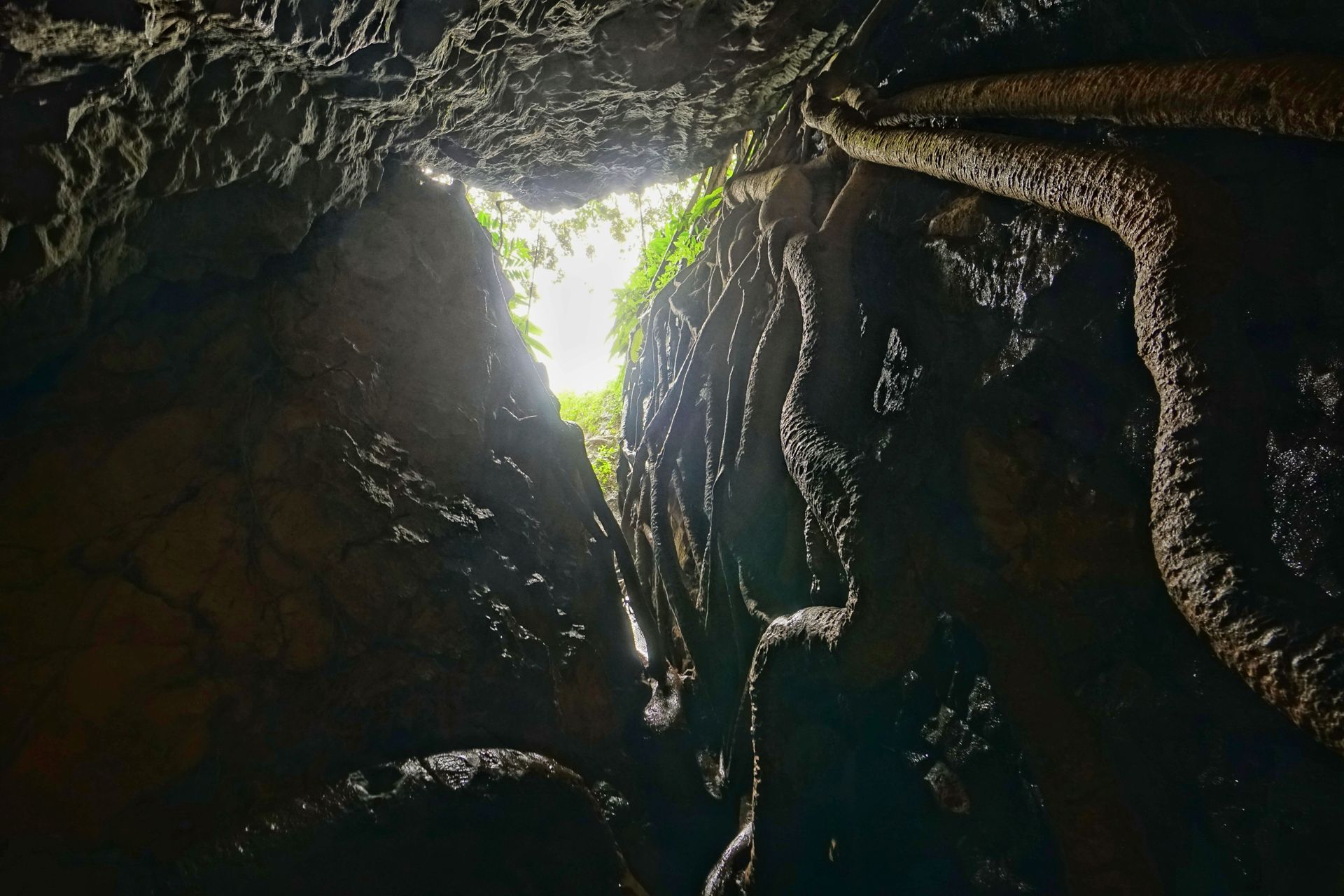
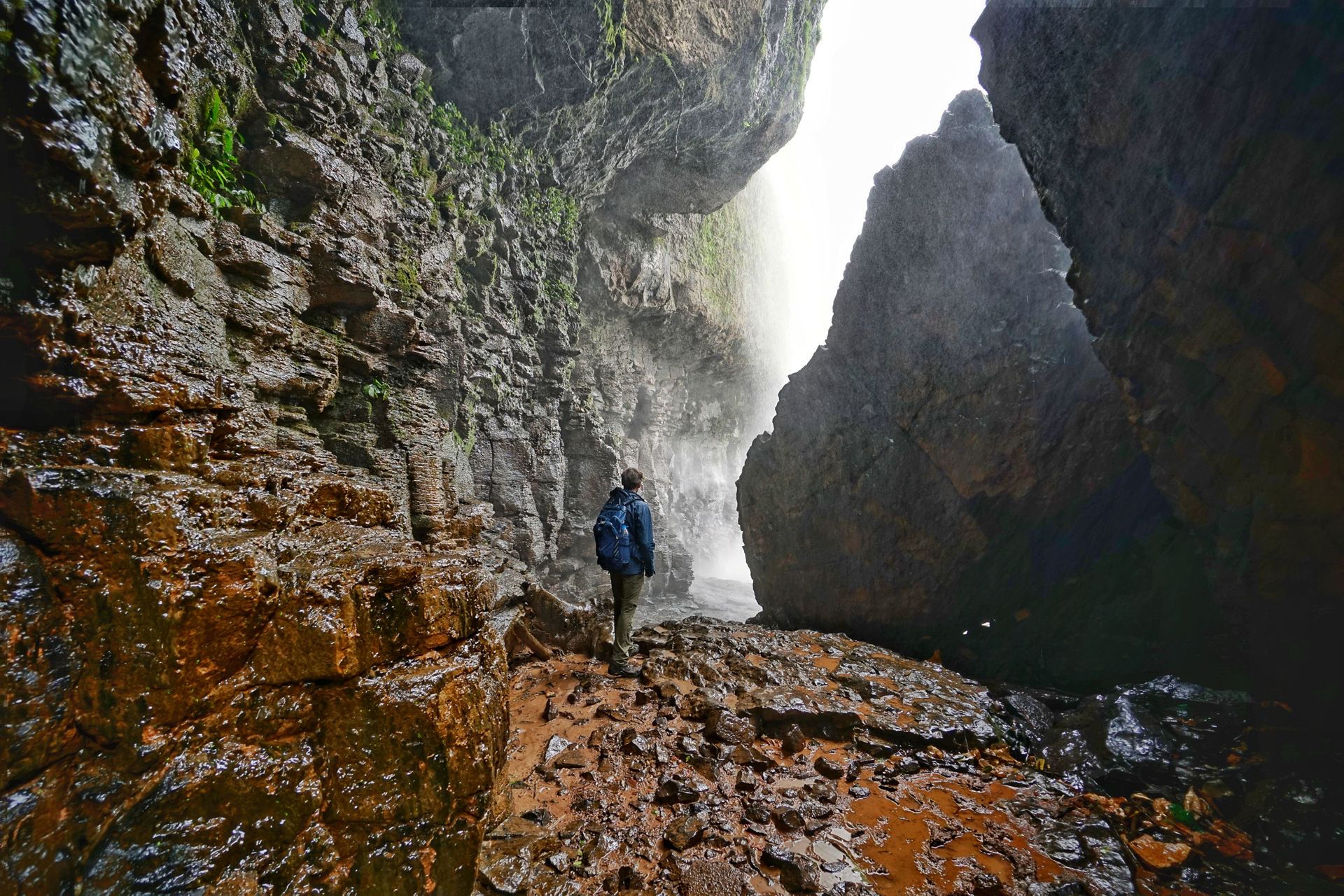
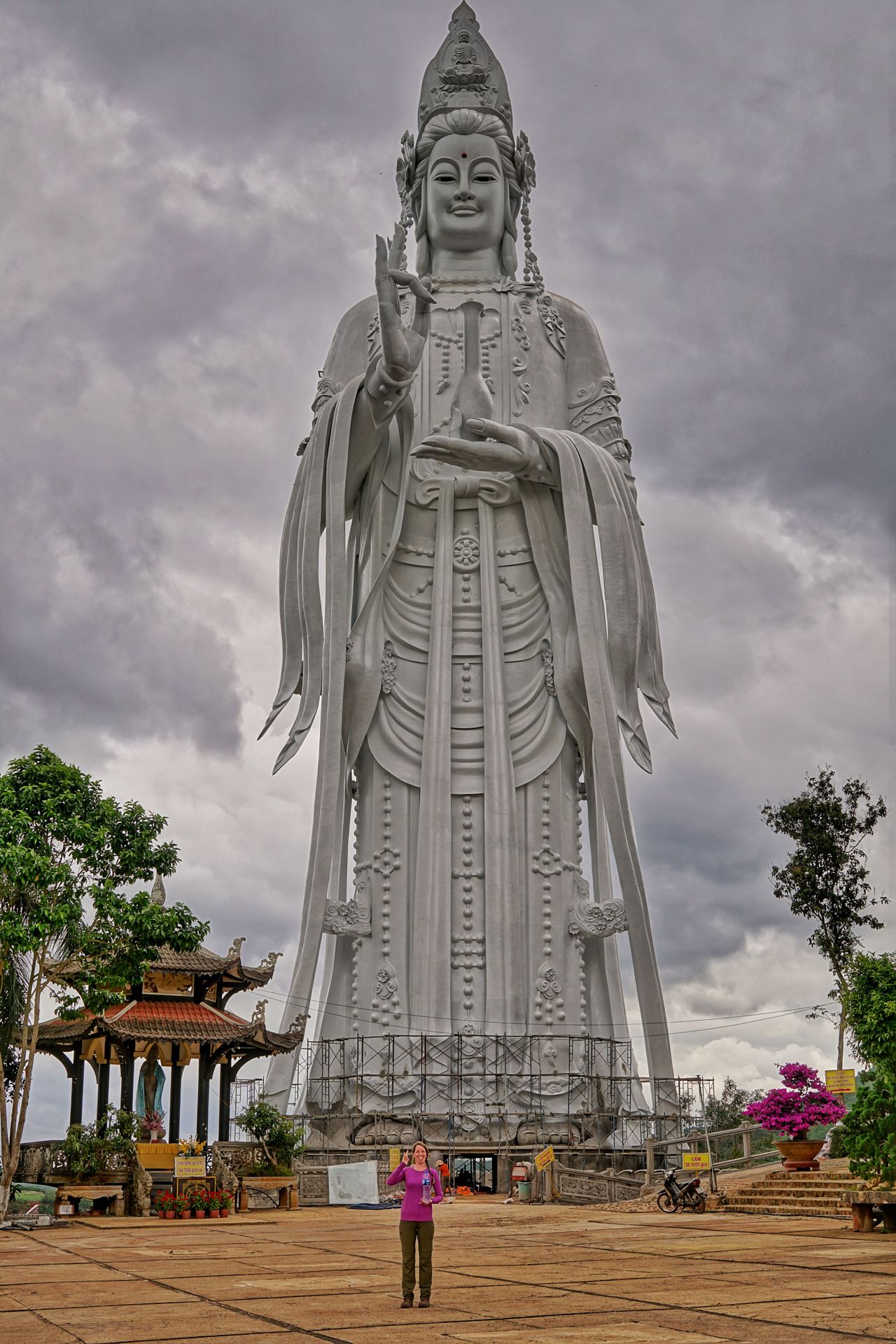
Since we had enjoyed escaping the city so much, we chose the Cat Tien National Park as our next destination, which is halfway back to Ho Chi Minh City. Due to its remoteness, the journey was somewhat adventurous. Instead of a comfortable tourist bus, we opted for a "local bus," which is usually only used by locals. Every 5 minutes, the bus stopped and loaded and unloaded goods from food to plants or pieces of furniture, and when more people wanted to board than the bus had seats, folding stools were simply placed in the aisle to create a new row of seats in the already very cramped bus. After a good 4 hours of driving, we reached a crossroads where we had to get off and hope that the promised taxi would come to drive us the remaining 20 kilometers to the national park. To our surprise, everything went smoothly, and we finally arrived in the jungle after a long journey and settled into a wooden hut built on stilts with a view of the river. This is how we imagined a jungle break (ok, admittedly, on the first night, our neighbors kept us entertained with their karaoke singing at full volume, but otherwise, it was very idyllic).

A short boat ride the next morning took us across the river into the actual national park. Here, we finally got what we had been missing for so long: peace and quiet. Most parts of the national park consist of dense jungle and some trails, though they are not used by anyone because most visitors just drive along the short road in jeeps and want to pose for a few photos. So we set out to explore the lonely jungle. There are said to be various animals here: monkeys, crocodiles, and tigers, just to name a few. Unfortunately, we didn't see any of them and instead encountered other jungle inhabitants: ants and leeches. Our relaxed jungle walk thus turned into a battle against countless leeches that made their way up our clothes. After this shock and successful defense against the sneaky critters, we almost got lost in the jungle and, last but not least, were surprised by a heavy rain shower and got completely soaked. So all in all: a perfect adventurous day with a lot of laughter at ourselves! Fortunately, our jungle hut had a covered terrace with a hammock where we could relax.
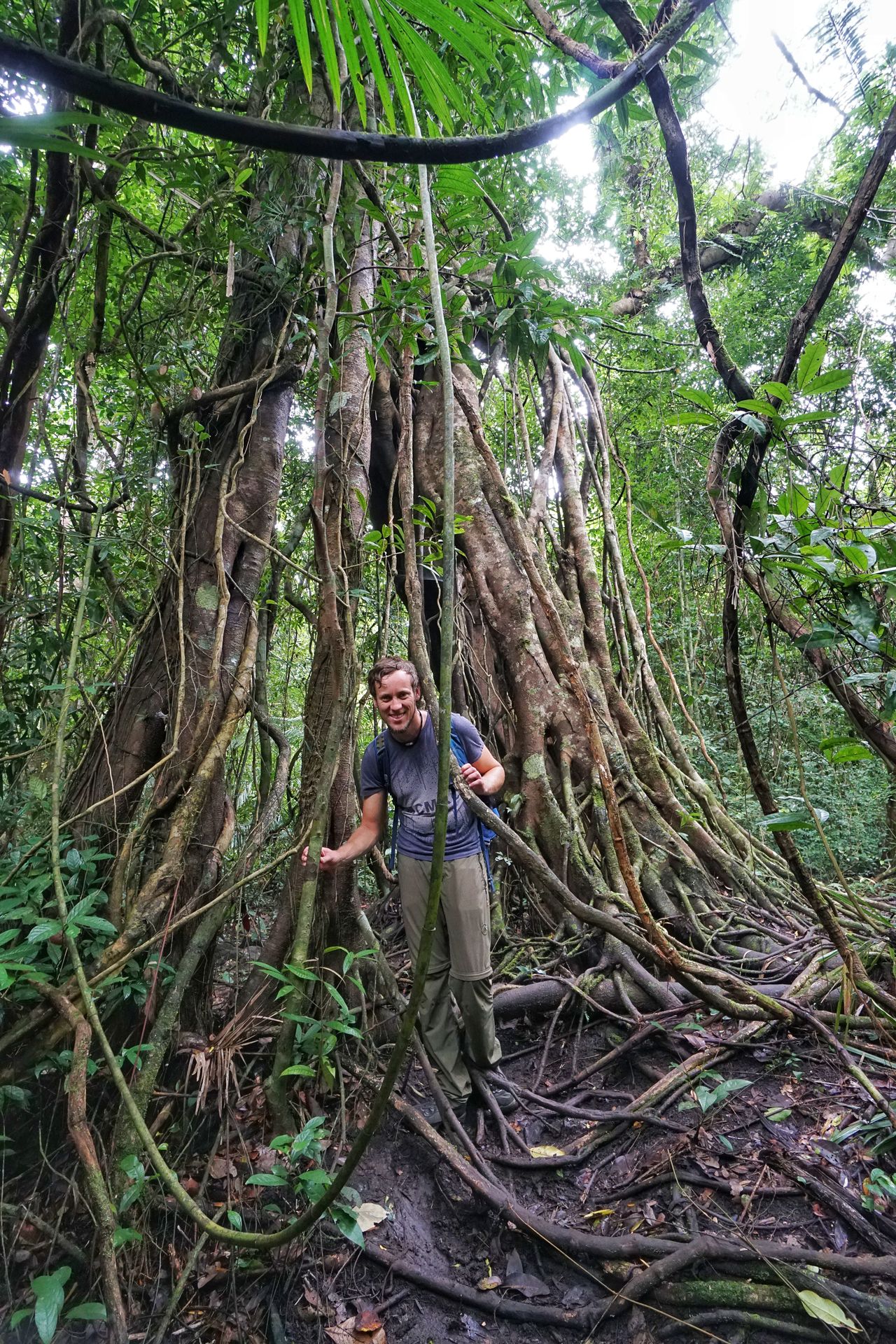

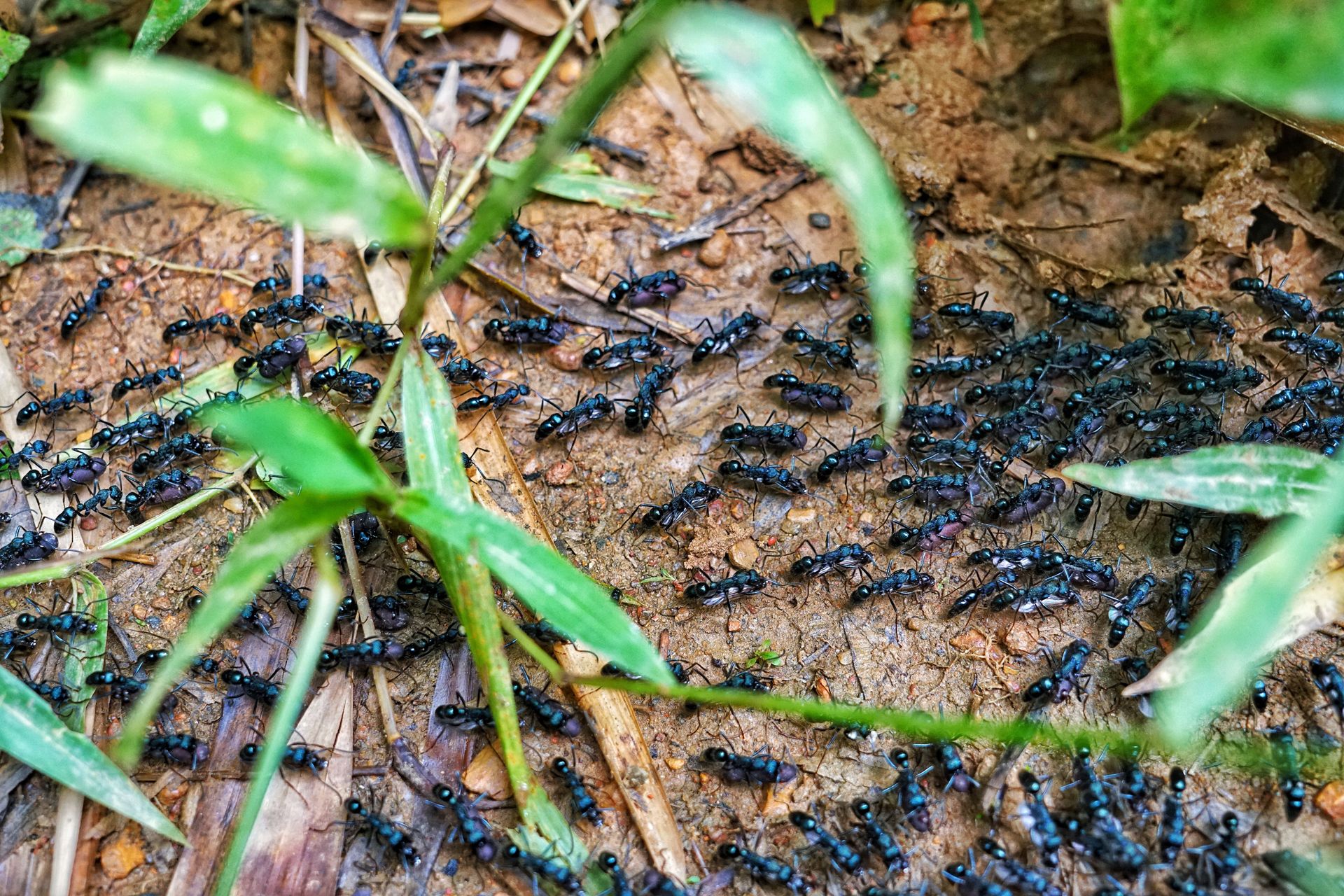
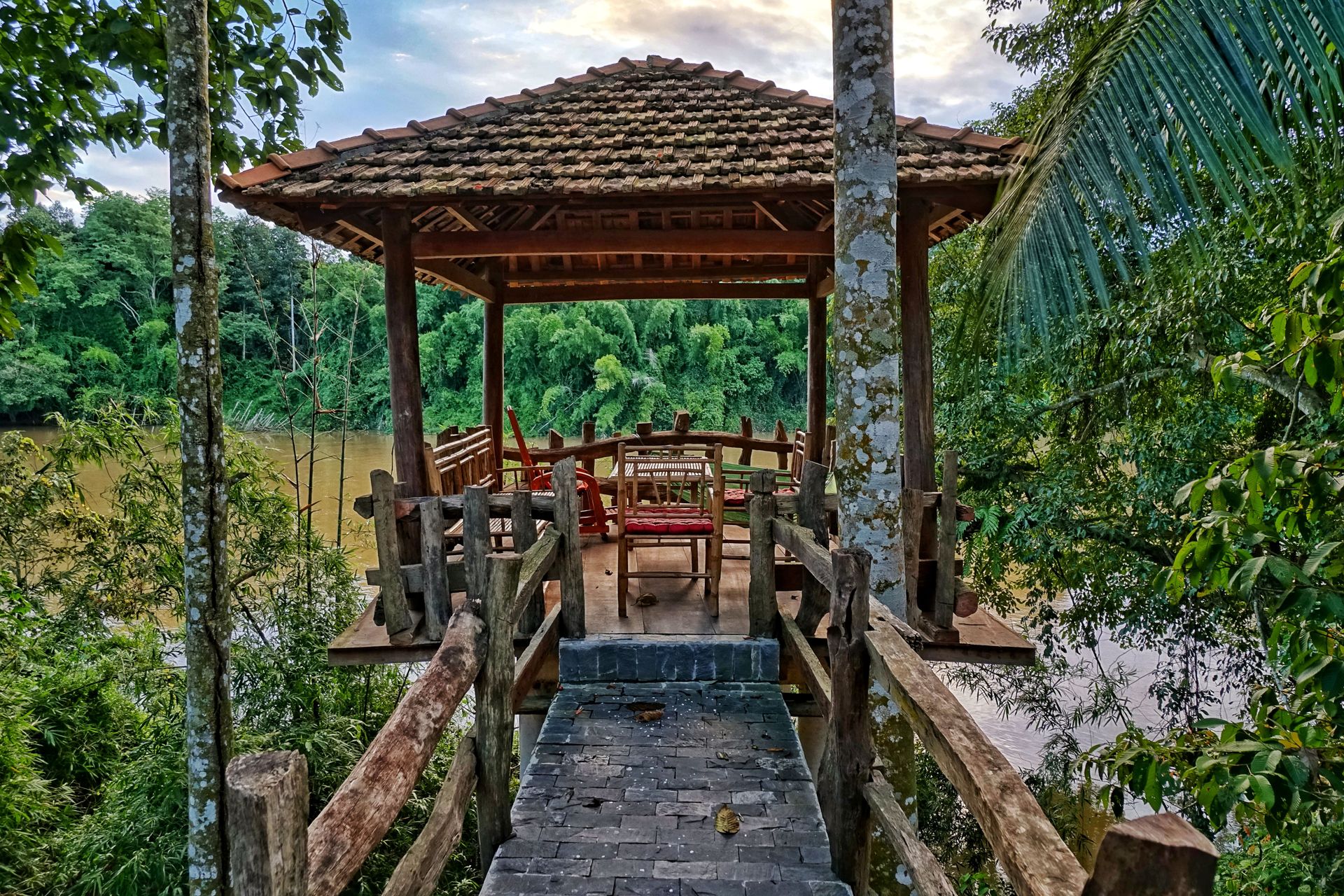

Our last stop was dedicated to the lifeline of millions of people in southern Vietnam, the Mekong River Delta. It extends over an area of around 40,000 square kilometers and is called the "southern rice bowl of Vietnam" due to its extremely fertile soil (16 million tons of rice are harvested here every year). We chose the city of Can Tho as our base and realized on the journey through the delta that this region of Vietnam is much poorer than any other area we had seen. Proper stone houses gradually turned into more and more shanties, and everything looked progressively dirtier and especially more littered.
To get a real insight into life on the Mekong, we booked a private 7-hour boat trip with a traditional boat and an older Vietnamese woman as our boat guide. It started early in the morning before sunrise. After nearly an hour of boating in the dark, passing makeshift tin huts on stilts in the river and unbelievable amounts of trash, we reached the Cai Rang floating market at dawn. Here, traders from all areas of the Mekong Delta gather in the middle of the huge river with their wooden trading boats, which also serve as houseboats, to exchange their goods and sell them to smaller traders. To quickly see where to buy what during the passage through the market, the goods to be sold, such as fruits or vegetables, are attached to long wooden poles and mounted on the outside of the boat - almost like in our supermarkets, where there are signs above each aisle stating what is for sale there.


Next, the boat trip took us to a rice noodle factory, where we were allowed to help with the production, and to a second floating market further downstream, the Phong Dien Market. Here, much smaller trading boats were in action, and we were really in the midst of the trading hustle and bustle. Our boat guide bought various fruits and drinks from the different boats and showed us a typical shopping day on the Mekong. Some very determined tourists on another boat even ordered rice with chicken from one of the floating food stalls - but when we saw how the cook washed the raw chicken in dirty river water, our appetite quickly disappeared.




On the return journey, we took a detour through some very narrow and still very original side canals overgrown with palm trees. Here, the garbage problem became so bad that the boat propeller had to be freed from trapped plastic trash every 5 minutes. Nevertheless, the detour was beautiful and gave us another deeper insight into non-touristy Vietnam with its river inhabitants. It was unimaginable and impressive at the same time to see how the people there manage their lives by the river in the simplest conditions and make the best out of their poverty and still find happiness. We rarely saw such happy people as here on the Mekong.

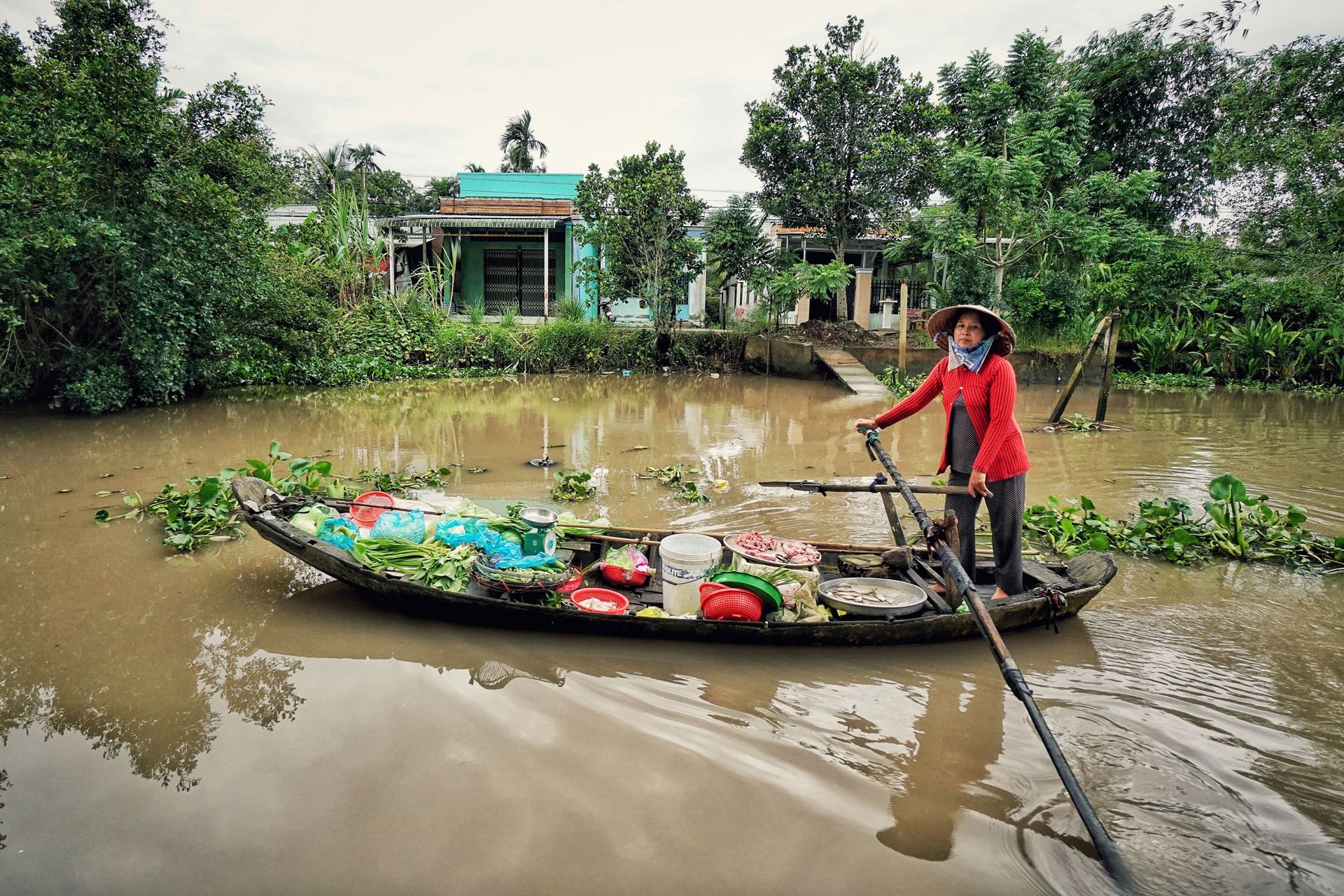
With these impressions, we happily concluded the chapter on Vietnam, even though it is surely temporary, because this country really captivated us! However, we were only allowed to stay in the country for 2 weeks without a visa and therefore continued our journey to Thailand.
Song of Vietnam: For what it's worth - Buffalo Springfield
Abonnez-vous na Bulletin ya Sango
Eyano
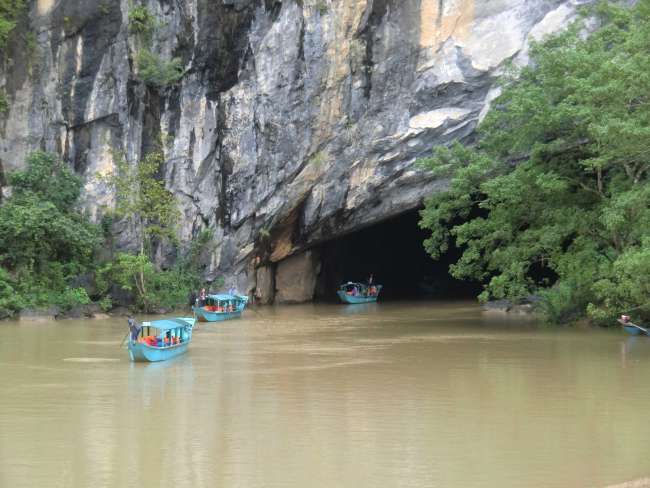
Lapolo ya mobembo Vietnam
